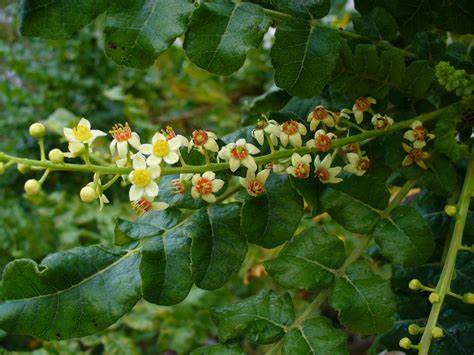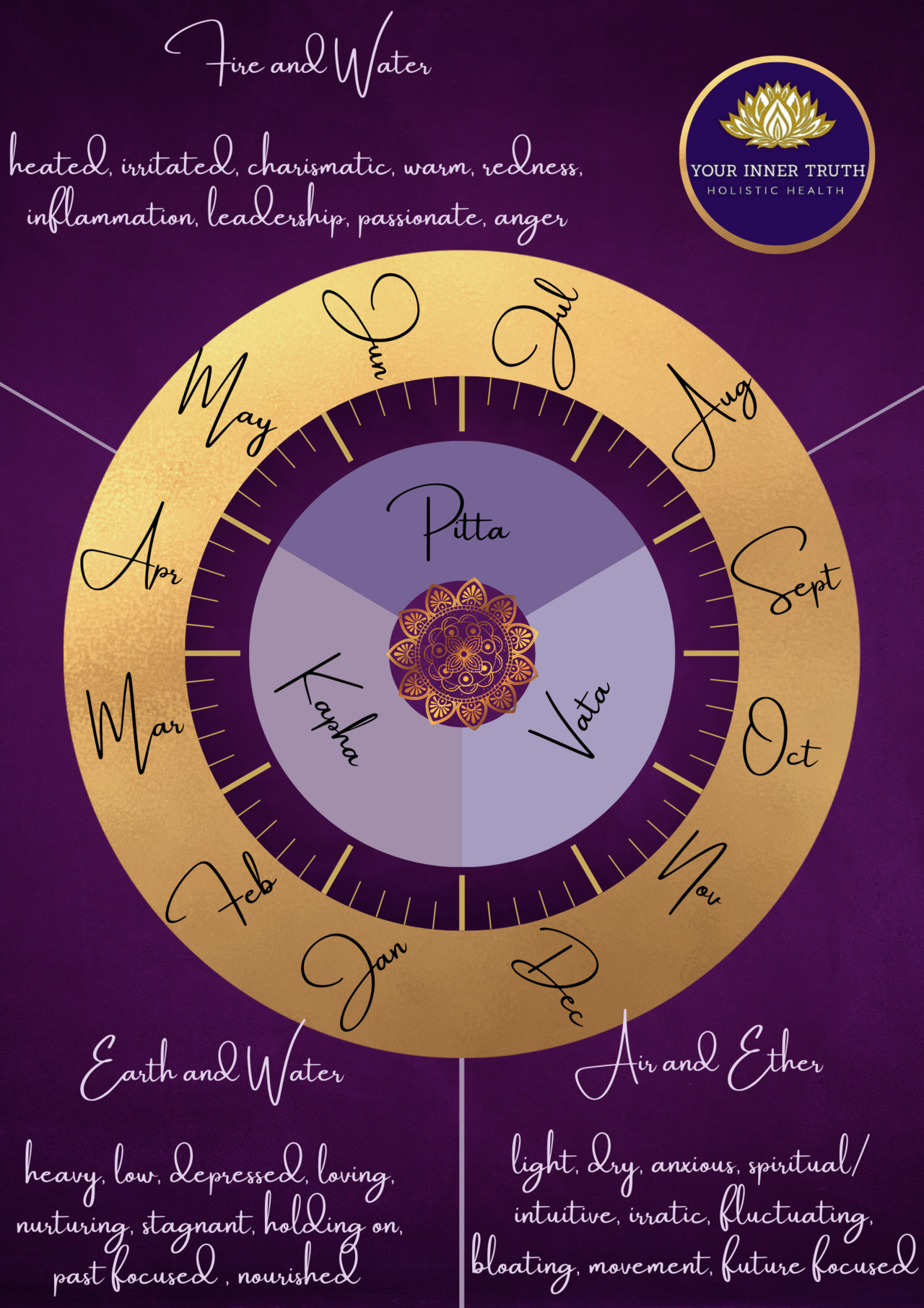Rebalance your body, mind & soul with Ayurveda

- START HERE
What are the doshas?
The doshas out of balance.....

Discover your natural state of balance
Current state of balance
VATA season/imbalance
Create your Dinacharya (daily rituals)
Meditations (audio)

Listen to Guided Abhyanga massage meditation.aac by Your Inner Truth on #SoundCloud
https://soundcloud.app.goo.gl/...

Listen to morning motivation .aac by Your Inner Truth on #SoundCloudhttps://soundcloud.app.goo.gl/...

Listen to healing energy meditation .aac by Your Inner Truth on #SoundCloud https://soundcloud.app.goo.gl/...

Listen to chakra meditation week 1.aac by Your Inner Truth on #SoundCloud
https://soundcloud.app.goo.gl/...

Listen to stepping into the ideal you.aac by Your Inner Truth on #SoundCloud
https://soundcloud.app.goo.gl/...

Listen to journey to your guide .aac by Your Inner Truth on #SoundCloud
https://soundcloud.app.goo.gl/...

Listen to Reviewing your journey .aac by Your Inner Truth on #SoundCloudhttps://soundcloud.app.goo.gl/...

Listen to breath awareness meditation .aac by Your Inner Truth on #SoundCloudhttps://soundcloud.app.goo.gl/...

Listen to effortless awareness meditation to restore calm by Your Inner Truth on #SoundCloudhttps://soundcloud.app.goo.gl/...
Basic idea: Increase the sweet, salty and sour tastes. Avoid: Bitter, astringent and pungent
tastes
GRAINS (It is best to eat these as cooked grains)
Best: Amaranth, oats (cooked), quinoa, basmati rice (white or brown), unprocessed wheat
Small Amounts: Barley, millet
Avoid: Buckwheat, corn flour (chips, bread, and tortillas), dry oats (granola), polenta, rye
DAIRY
Best: Butter, buttermilk, kefir, milk, sour cream, cottage cheese or queso fresco, yogurt (fresh)
Small Amounts: Hard, smelly cheeses
Avoid: Ice cream, frozen yogurt
OILS
Best: Almond, ghee, sesame
Small Amounts: Avocado, coconut, flaxseed, mustard, olive, peanut, sunflower
Avoid: Safflower
SWEETENERS With vata, moderation is key. Even the healthiest form of sweets can cause imbalance in excess.
Best: Raw, uncooked honey, maple syrup, molasses, brown rice syrup, sucanat
Small Amounts: Date sugar
Avoid: Brown sugar, white sugar
FRUITS
Best: Baked apples, apricots, avocados, bananas (ripe), blackberries, cantaloupe, cherries, coconut, cranberry
sauce, fresh dates (not dry), figs (fresh), grapefruit, grapes, lemons, mangos, nectarines, oranges, papaya,
peaches, pears, persimmons, pineapple, plums, raspberries, strawberries (ripe), tangerines
Small Amounts: Apples (sour is best), pomegranate
Avoid: Dried fruit of any kind, cranberries
VEGETABLES Cooked vegetables are best. Most raw veggies will disturb vata.
Best: Avocado, beets, carrots (not as a juice), leeks, mustard greens, okra, onions (well cooked), parsnips, shallots, acorn squash, winter squash, sweet potatoes, tomatoes, water chestnuts
Small Amounts: Broccoli, cauliflower, celery, corn, cucumber, eggplant, green beans, kale, medium chilies and hot peppers, mushrooms, potatoes, radishes, seaweed, spinach, peas, courgette. Lettuce, spinach, and any leafy green can be eaten uncooked with a creamy or oily dressing occasionally.
Avoid: Alfalfa sprouts, artichokes (unless served with a butter and lemon sauce), asparagus, bean sprouts, Brussels sprouts, cabbage (even cooked), raw vegetables, sugar snap peas.
NUTS AND SEEDS
Nuts should also be eaten in moderation, and lightly roasted and salted. Dry roasting should be avoided. Nut butters are fine.
Best: Almonds
Small Amounts: Cashews, filberts, pecans, pinon, pistachio, pumpkin seeds, sesame seeds, sunflower seeds, and any other nut not mentioned Avoid: Peanuts
MEATS If you choose to eat meat, limit consumption to 2-3 times per week. Meat soups can be particularly nourishing when you are depleted, fatigued or overcoming sickness.
Best: Chicken and turkey (dark meat), beef, duck, eggs, freshwater fish, lamb, pork, seafood, venison
Small Amounts: Chicken and turkey (white meat), shellfish
LEGUMES
Best: Mung beans
Small Amounts: Tofu, hummus Avoid: Aduki beans, black beans, chickpeas, fava beans, kidney beans, lentils, mexican beans, navy beans, pinto beans, soybeans (except as tofu or soy milk)
SPICES
Best: Anise, basil, bay leaf, caraway, cardamom, catnip, cinnamon, clove, cumin, dill, fennel, fenugreek, garlic, ginger(fresh), marjoram, mustard, nutmeg, oregano, pepper, peppermint, poppy seeds, rosemary, saffron, sage, spearmint, thyme, turmeric.
Small Amounts: Cayenne pepper, cilantro, ginger (dry), horseradish, mustard, parsley.
CONDIMENTS
Best: Mayonnaise, vinegar
Small Amounts: Ketchup
Avoid: Carob, chocolate
BEVERAGES
Best: warm water, spicy teas such as chamomile, cinnamon, clove, and ginger.
Small Amounts: Diluted fruit juices
Avoid: All alcohol, black tea, carbonated mineral water, coffee, fruit juices, soft drinks
Vata Season Recipes (Autumn - Early Winter)
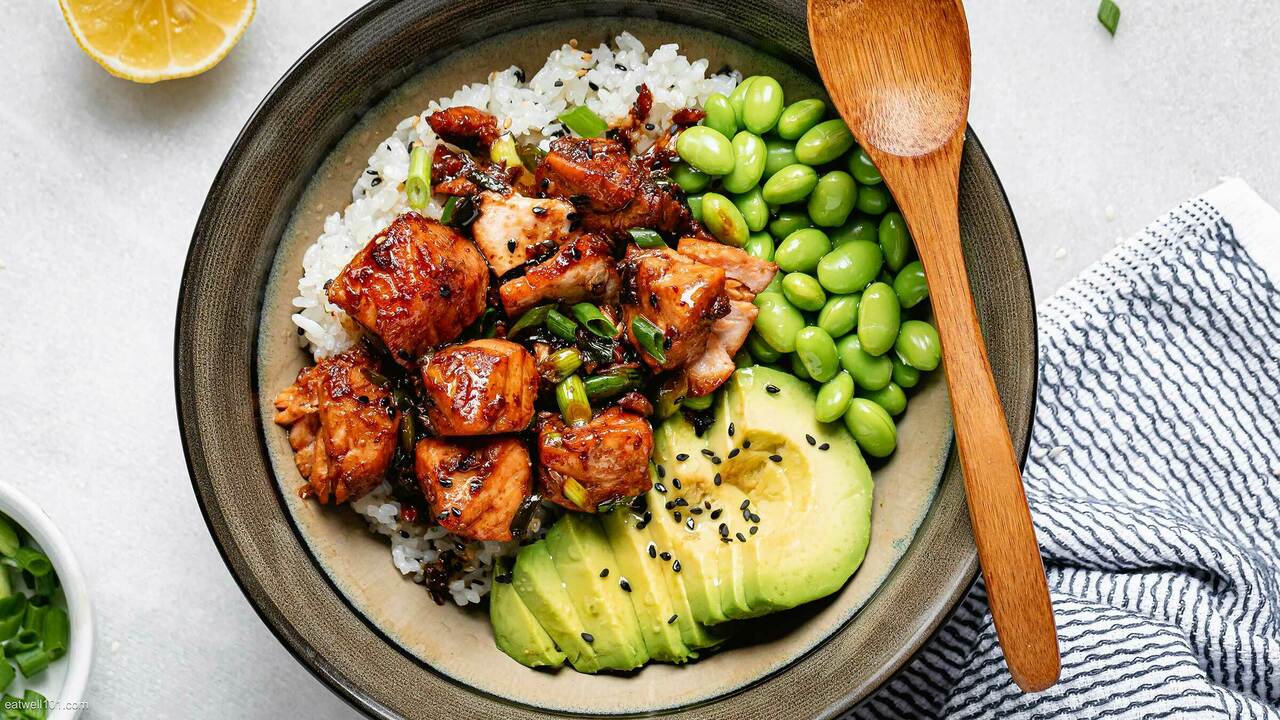
Teriyaki Salmon bowl
Ingredients
3 cups cooked rice
1 piece of salmon or 200g
1 tsp sake
1/4 cup teriyaki sauce
Handful of cabbage or any vegetables to serve
2-3 radishes
1/4 cup edamame
1 tsp Sesame seeds to garnish
1 tsp chopped spring onions
1 tsp olive oil
Instructions
Sprinkle the sake over the salmon fillet and set aside.
Shred cabbage and radish very thinly and soak in water.
Remove excess sake and moisture from the salmon fillet with a kitchen paper towel.
Heat the olive oil in a pan over medium heat.
Pan fry the salmon until it is cooked. Remove the salmon from the frying pan and cut it down into small pieces.
Wipe the frying pan with a kitchen paper towel and simmer the teriyaki sauce in the pan.
Add the salmon back into the pan and coat it with the teriyaki sauce.
Put rice into a bowl then top with salmon and vegetables, and serve!
And actually this is a perfect meal for all the doshas! Enjoy
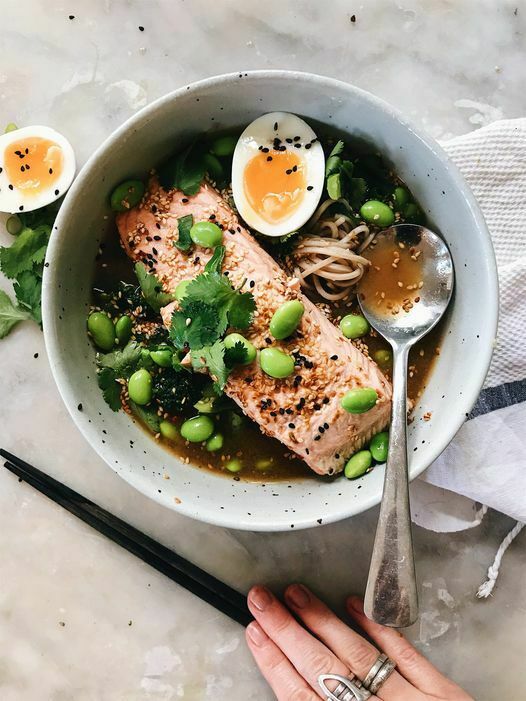
Salmon noodle bowl
This is suitable for all the doshas although kapha may need less fish and pitta less chilli
Ingredients
200 g skin on salmon fillet
1 level Tbs miso paste
1Tbs ginger, grated
1 small clove garlic, crushed
1 tsp chilli flakes
2.5 cups water
1 Tbs sesame seeds
1 cup edamame or peas
1 egg
50g soba noodles
1 cup broccoli florets
1/3 cup coriander leaves
1 Tbs spring onion, finely sliced
1/2 tsp black sesame seeds, optional
1. Place miso ginger, chilli, garlic, coriander stalks and water in a small pot and bring to a boil. Simmer for 10-15 minutes.
2. Meanwhile bring a separate pot of water to the boil. Place egg in, and simmer for 6 minutes and 30 seconds. Remove, without draining water, and place in cold water to cool.
3. Add soba noodles to this water and cook according to packet directions. Drain, reserving hot water. Rinse and set aside.
4. Place edamame or peas in reserved hot water and allow to sit for a few minutes. Drain and pod the edamame, set aside.
5. Toast sesame seeds in a clean pan until golden. Set aside.
6. Peel egg. Slice in half and set aside.
7. Place salmon fillet in the miso and ginger broth. Cook for 3 minutes. Add broccoli florets and continue to simmer in broth for 2 more minutes.
8. Remove salmon and broccoli from the broth. Place the salmon skin side up in the pan of sesame seeds so they stick to the salmon.
9. Build your bowl: Place noodles in the bottom of the bowl. Spoon over the broth. top with the broccoli, salmon and edamame. Sprinkle over any sesame seeds that are still in the pan. top with soft boiled egg, scatter with spring onion, coriander leaves and black sesame seeds if using.
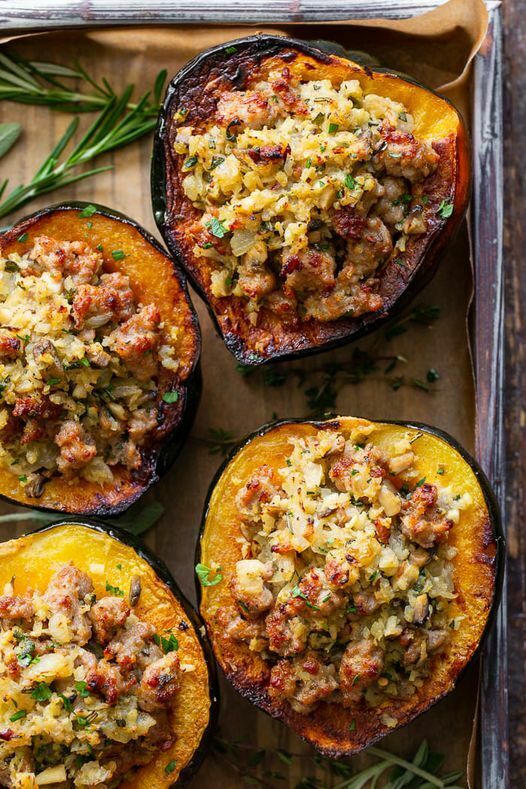
Baked Squash which is suitable for all the doshas, although kapha could handle a bit of added chilli flakes into the mix
INGREDIENTS:
1 Acorn squash/alternative squash
1 tbs. of ghee or coconut oil
1/4 cup of pecans or walnuts
1 cup of cooked basmati rice
1/4 tsp. of cumin powder
2 tbs. of raisinspinch of salt
1/4 onion diced
1/4 tsp. of ginger powder
1/4 cup of cilantro, basil or parsley
1. Cut the squash in half and gut out the seeds.
2. Prepare a baking dish with 1/2 inch of water.
3. In a small pan warm ghee and then mix all the ingredients, minus the rice, squash and fresh coriander, sauté for around 5 minutes on a medium heat.
4. Separately, bring 1 cup of rice with 2 cups of water with a pinch of salt to a boil. Lower the heat and cover. Cook for 20 minutes.
5. Take these ingredients, mix them all together in a small bowl and add them to the halves of the squash. Place the acorn squash into the baking dish and cover with aluminum foil.
6. Bake for 35-45 minutes at 190 degrees.
Test the squash with a fork and when the squash appears soft. Turn the oven off and remove. Let sit for 5 minutes. Garnish with the fresh coriander and serve.

LENTIL AND MUSHROOM STEW OVER POTATO-PARSNIP MASH - this is great recipe when you need something heavy and grounding. For pitta you may want to omit the chilli and reduce red wine, for kapha you may want to reduce the ghee and have less mash
Ingredients
1 lb. Russet potatoes partially peeled
1 lb. parsnips peeled
2 Tbsp. Ghee/coconut oil
1 yellow onion finely chopped8 oz. cremini mushrooms sliced
8 oz. shiitake mushrooms stemmed
3 garlic cloves minced
3 Tbsp. tomato paste
1 tsp. dried chilli flakes (optional)
1/2 cup dry red wine
1 Tbsp. plus
2 tsp. chopped fresh rosemary divided
6 thyme sprigs
1 tsp. sea salt
1 tsp. black pepper
2 cups vegetable broth
2 Tbsp. flour
1 cup cooked brown lentils (can use beans or quinoa instead)
2 Tbsp. lower-sodium soy sauce or tamari
1/2 cup milk of choice
2 Tbsp. Ghee
Instructions
1. Cut the potatoes and parsnips into equal sized chunks. Place them into a large pot, cover with cold water, and add a large pinch of salt. Bring to a boil and simmer until the vegetables are fork tender, about 20 to 30 minutes.
2. Meanwhile, heat ghee/oil in a large skillet over medium-high. Add onion and mushrooms; cook until onion softens and mushrooms are golden, about 8 minutes.
3. Add garlic and tomato paste; cook until paste turns brick red, about 4 to 5 minutes.
4. Add wine, 1 Tbsp. rosemary, thyme, chilli, 1/2 tsp. salt, and pepper. Cook until wine reduces by half, about 2 minutes.
5. Whisk broth, flour, and soy sauce in a bowl, and pour into pan. Simmer until mixture thickens, about 6 to 7 minutes.
6. Stir in lentils, and remove thyme stems from pan.
7. Drain potatoes and parsnips and place back in hot pot.
Add milk, ghee, remaining 1/2 tsp salt, and 2 tsp rosemary. Use a potato masher to thoroughly mash.
8. Serve mash and spoon lentil and mushroom mixture overtop.
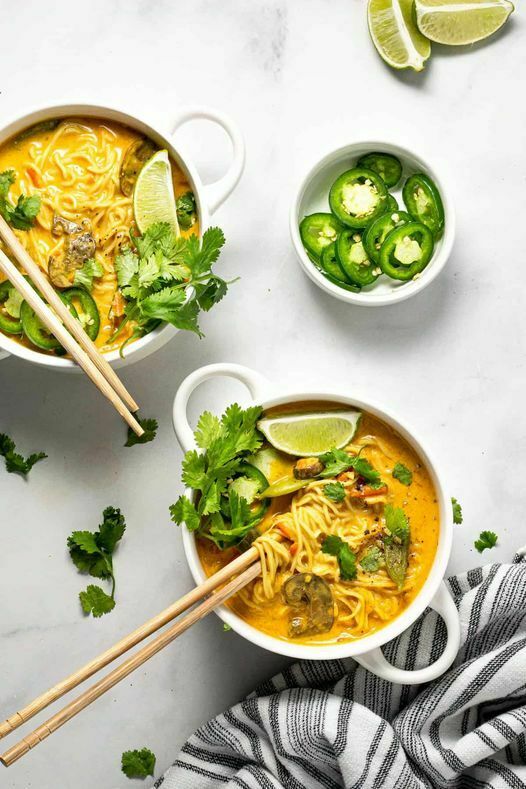
Curried Ramen - This is the perfect dish for when you are running short on time but want something warming, nutritious and delicious. It's the usual advice of less spice for pitta and more for kapha and somewhere in between for vata. For pitta you may also want to add additional fresh coriander to cool it down further
INGREDIENTS
1 tablespoon sesame oil
1 cup shredded carrots
1 cup sugar snap peas
8 oz. sliced mushrooms
1–3 tablespoons red curry paste (less if you have more pitta/more for kapha)
2 teaspoons curry powder
6 cloves garlic, minced
2 teaspoons minced ginger
6 cups vegetable broth
1 can of coconut milk
8 oz. ramen noodles
Juice of 1 lime
Sea salt
fresh cracked pepper
Jalapeño peppers (optional)
1. Heat oil in a large pot over a medium heat.
2. Add carrots, peas and mushrooms along with a large pinch of salt and pepper. Cook for 3 minutes, stirring occasionally.
3. Add curry paste, curry powder, garlic and ginger and cook for 1 minute, stirring.
4. Stir in broth and coconut milk and season to taste with salt and pepper.
5. Turn heat to medium high and bring to a simmer.
6. Add ramen noodles and cook for 10 minutes or until noodles are cooked
7. Stir in the juice of 1 lime and serve!
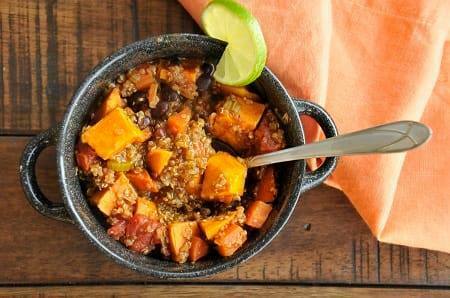
Sweet Potato Chili - this is gorgeous for those cooler days when you are craving a bit of warmth. If you have a lot of pitta going on then you may want to reduce the chilli and add fresh coriander at the end. For kapha you may want to leave out the avocado
INGREDIENTS:
2 tsp. ghee/coconut oil
1 diced medium red onion (optional)
3 diced celery sticks
3 diced carrots
1 diced large sweet potato
3 tbsp. chili powder (optional)
½ tsp. ground chipotle
½ tsp. ground cumin
¼ tsp. pink Himalayan salt
A tin of black beans (rinsed)
1 tin of chopped tomatoes1 cup quinoa2 ½ cups vegetable broth
1 lime
1 avocado
1. Using a large pot over medium heat, warm the oil and sweat the celery and red onion. This will take a couple of minutes.
2. In a large bowl toss the sweet potatoes, carrots, oil, chili seasoning, chipotle, cumin, and salt.Add the seasoned sweet potatoes to the pot, stirring until the seasonings smell fragrant and cooked.
3. Include the black beans, tomatoes, quinoa, and vegetable broth.
4. Turn up the heat and bring ingredients to a boil.
5. Once at a boil, turn down to simmer and keep your pot covered 30 - 40 minutes. The quinoa will absorb all of the liquid and the sweet potatoes will be soft.
6. Remove from heat and let sit 5 - 8 minutes.
7. Spoon into bowls and add sliced avocado
8. Dress with a squeeze of lime.
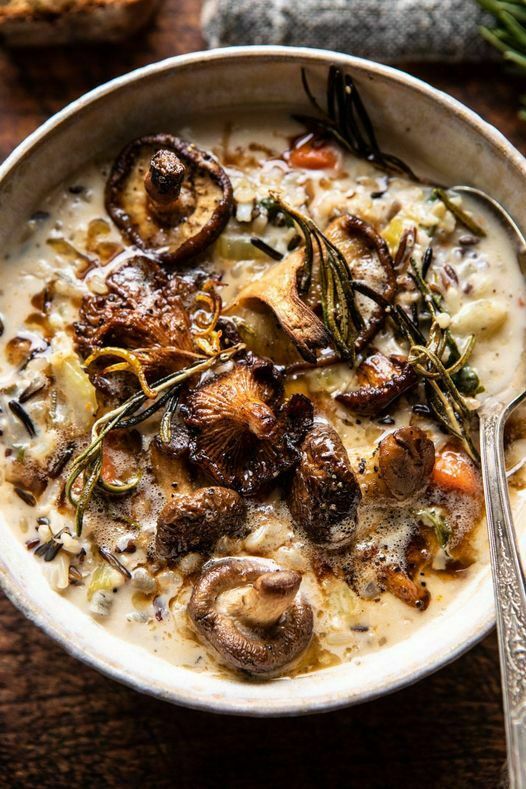
Mushroom, chicken and wild rice soup - this is the perfect recipe if you are feeling depleted and need some nourishing love. If you have a lot of kapha going on, feel free to rein back on the oil and add some additional chilli. No adjustments needed for pitta. If you are vegetarian then just leave out the chicken and use veggie stock. The other added benefit of this recipe is that mushrooms are one of the few food sources that have vitamin D and as the weather turns unpredictable it is certainly something we need more of - however I would always recommend supplementing vitamin D at this time of year as we need it and struggle to get enough when the days are short and weather uninviting! Enjoy!
Ingredients:
1 pound boneless, skinless chicken breasts
1 1/2 cups dry wild or basmati rice
6 carrots, chopped
3 stalks celery, chopped
2 medium shallots, chopped
6 cups chicken stock
2 tablespoons chopped fresh thyme or 2 teaspoons dried
1 tablespoon chopped fresh sage or 1 teaspoon dried
1/2 teaspoon crushed red chilli flakes
2 cups fresh baby spinach or kale
2 tablespoons chopped fresh parsley
1 cup milk
1/2 cup grated parmesan, plus more for serving
salt and black pepper
6 tablespoons ghee or coconut oil, melted
2 pounds mixed mushrooms, roughly torn
2 sprigs fresh rosemary
4 cloves garlic, smashed
zest from 1 lemon
1. In a large soup pot, melt 2 tablespoons ghee/coconut oil. Add the carrots, celery, shallots, and a pinch each of salt and pepper. Cook until fragrant and caramelized, about 3-5 minutes. Stir in the broth, chicken, wild rice, thyme, sage, crushed red pepper, and season with salt and pepper. Bring to a boil over high heat. Once boiling, cover and reduce the heat to low, cook 35-45 minutes, until the rice is tender.
2. Shred the chicken with 2 forks. Stir in the cream, parmesan, and spinach. Cook over medium heat until warmed through, about 10 minutes. Stir in the parsley.
3. To make the mushrooms. Preheat the oven to 180. On a baking sheet, combine the ghee/coconut oil, mushrooms, garlic, rosemary, lemon zest, and a pinch each of salt and pepper. Roast for 25-30 minutes, stirring halfway through cooking, until the mushrooms are golden and crisp.
4. Mash the garlic with a fork, then stir in the mushrooms, mashed garlic, and any ghee left into the soup.
5. Top with rosemary and additional parmesan
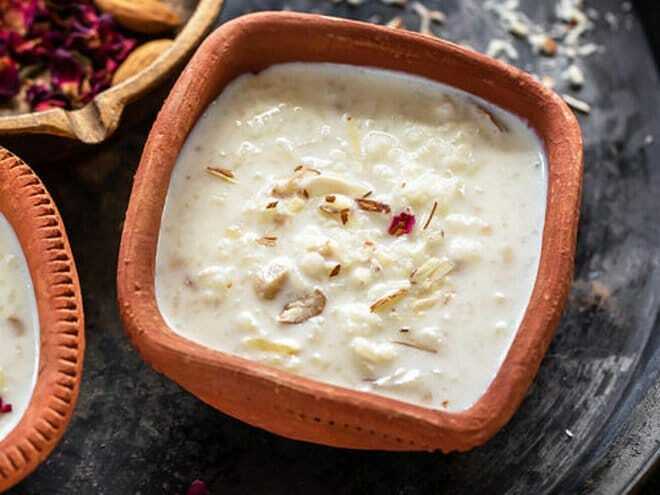
Kheer - This is the classic Indian rice pudding recipe. In winter, this is eaten warm, and in summer, it is eaten cold and actually makes a gorgeous alternative to porridge this time of year. Some recipes make it with nutmeg or saffron instead of cardamon but you could also try cinnamon or adding a sprinkle to the top. It is also suitable for all doshas so no substitutes needed for this one!
Ingredients:
4 cups whole milk
¼ cup uncooked white basmati rice
½ teaspoon ground cardamom
¼ cup chopped unsalted cashews
¼ cup green/ golden raisins
½ cup granulated cane sugar
1 Tablespoon rose water
A pinch of salt
Instructions: In a medium saucepan over medium heat, heat milk and rice. Cook on low heat for 20 minutes. Stir once every 5 minutes and scrape milk scrapings (if any) from the sides of the pan and add them back into the milk. Add cardamom, cashews, raisins, and sugar, and cook for another 5 minutes. Finally, add a pinch of salt, and rose water while the dish is warm, stir. Remove from heat and serve.
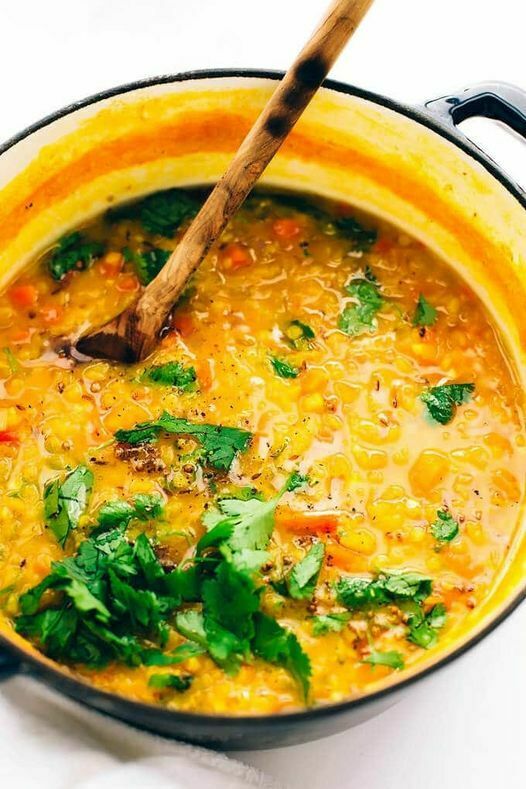
This is a gorgeous recipe for vata season and is actually suitable for all the doshas although those with very high pitta may want to reduce the chilli and mustard seeds. Would love to see your photos so try to remember to share in the group - cooking fails more than welcome
Root Vegetable Dal
Ingredients:
1 cup Cherry or grape tomatoes
1 Pinch Chilli flakes
1/3 cup coriander leaves
4 cloves Garlic
1/2-inch piece Ginger
1 Lemon
1 cup Red split lentils (substitute with other pulses or beans or quinoa if you prefer or are allergic to lentils)
1 cup Root vegetables
1 Yellow onion
1/2 tsp Coriander seeds
1/2 tsp Mustard seeds
Salt and pepper
1 tsp Turmeric
2 tbsp ghee or Coconut oil
1/2 tsp Cumin seeds
3 1/2 cups Water
Instructions
To a medium soup pot, add the rinsed lentils, diced root vegetables, diced onion, tomatoes, garlic, ginger, turmeric, and chili flakes. Pour the water into the pot and give everything a little stir. Place the pot on the stove over medium heat. Bring to a boil and then simmer for about 40 minutes, whisking the dal often. Toward the end, the lentils should be completely broken down. In the last 10 minutes of cooking, whisk vigorously to encourage the breaking down of the lentils. It should appear quite soupy. Season the dal generously with salt and pepper. Keep warm. Heat the coconut oil in a small pan over medium-high heat. Add the cumin seeds, coriander seeds, and mustard seeds. Once the seeds are fragrant and popping, remove from the heat. Gently spoon the toasted spice oil (with the whole spice on top of the dal. You can lightly stir it in if you like. You can also portion the dal out first and then spoon the spice oil on top if you like. Garnish the dal with the chopped coriander leaves. Serve the dal hot with lemon wedges.
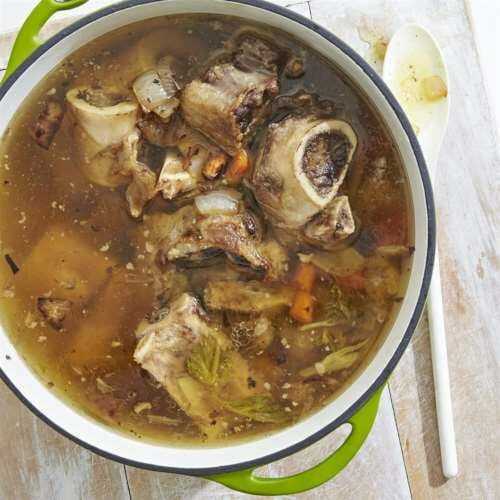
Bone Broth As promised here is a recipe to help heal your gut and ease inflammation
Animal bones - any will do but make sure your products are pasture-fed and free of antibiotics and hormones. Add a bit of apple cider vinegar to your pot to help draw the minerals from the bones. I find that the slow cooker works best for me. If vegetarian leave out the bones from the recipe below.
1. Place 2-3 large bones into a large stock pot or slow cooker.
2. Add two tablespoons of apple cider vinegar to water prior to cooking. This helps to pull out important nutrients from the bones.
3. Fill stock pot with clean water until it cover the bones. Leave plenty of room for water to boil.
4. Heat slowly. Bring to a boil and then reduce heat to simmer for at least six hours. Remove scum as it arises. I have found that if you have good bones, there is zero scum.
5. Cook slow and at low heat. Chicken bones can cook for 24 hours. Beef bones can cook for 48 hours. A low and slow cook time is necessary in order to fully extract the nutrients in and around bone.
6. You can also add in vegetables such as onions, garlic, carrots, and celery for added nutrient value.
7. You can also add in healing herbs: I suggest 1/2 cup dried nettles and 1/2 cup burdock root. I also sometimes to a big chunk of sliced fresh ginger.
After cooking, the broth will cool and a layer of fat will harden on top. The broth AND fats hold the nutrients so don’t discard. The collagen in bone broth will heal your gut lining and reduce intestinal inflammation. In addition, collagen will support healthy skin and can reduce the appearance of cellulite. Also, the glycine in bone broth can detoxify your cells from chemicals and improve brain function.
THIS RECIPE IS SUITABLE FOR ALL THE DOSHAS
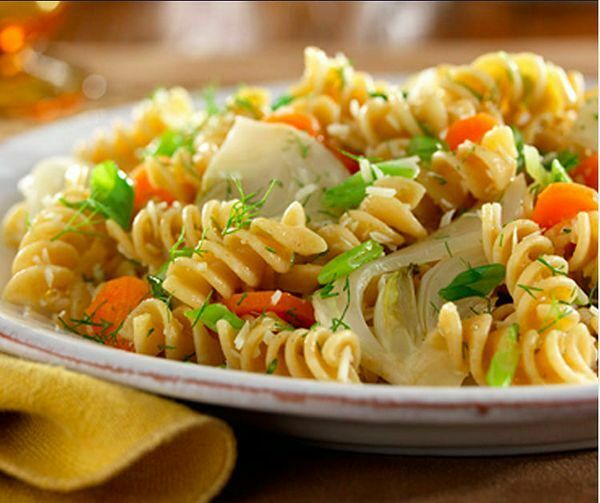
Pasta for Vata Season - who doesn't love pasta on a nippy day!
Whole wheat pasta offers a nice color contrast to the fennel. If fennel is not available you can substitute slivered celery or even green beans.
Ingredients
1 pound (500 g) fresh linguine, fettuccine, or spaghetti or ½ pound (230 g) dried
⅓ cup (80 ml) oil
Pinch of hing (optional)
2 cups (180 g) carrots, cut into 2-inch (5 cm) lengths and finely julienned
3 cups (330 g) fennel stalks, cut into 2-inch (5 cm) lengths and slivered lengthwise
Up to 4 tablespoons chopped fennel tops (if on the fennel bulb)
Salt
1 tablespoon fennel seeds
2 tablespoons lemon juice
½ cup (50 g) slivered pecans, lightly toasted
Black pepper
Cook the pasta and drain. Heat the oil in a large skillet over low heat. Add the hing and sauté for 30 seconds, until fragrant. Add the carrots, fennel, and fennel tops and sprinkle with salt. Stir, cover, and cook until tender, stirring occasionally. Toss the vegetables, fennel seeds, lemon juice, pecans, and a sprinkling of black pepper with the pasta. Adjust the seasoning.
For kapha: add 1/4 teaspoon of fresh grated ginger and sprinkle with chilli flakes
No substitutes needed for pitta
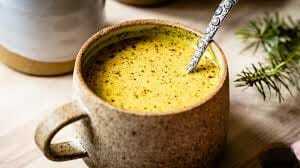
Golden milk Here's a beautiful vata recipe to keep you feeling nourished and set up for a good nights sleep
Ingredients
1 1/2 cups milk
1/2 teaspoon ground turmeric
1/4 teaspoon ground ginger
1/4 teaspoon freshly ground black pepper
3/4 teaspoon ground cinnamon
1 teaspoon honey
cinnamon stick for serving (optional)
Instructions
In a small saucepan, combine milk, turmeric, cinnamon, ginger, and black pepper. Heat on medium until warm, whisking occasionally. Pour into a mug, add honey and serve with an extra sprinkle of cinnamon, and a cinnamon stick.
Adaptions:
Pitta - substitute milk for coconut milk
Kapha - add a little extra ginger and can also substitute black pepper for cayenne pepper
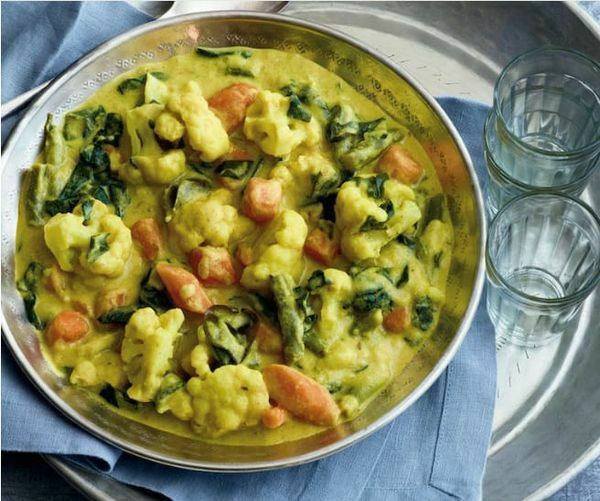
Vegetable Curry in Cashew Sauce 4 servings
This gorgeous Indian-style recipe is very adaptable. You can vary the combination of vegetables according to to what is in season and/or left over in the fridge. Would love to see you pictures if you give this a go
Ingredients
1⁄4 cup cashews, soaked overnight, drained, and rinsed
2 Tbsp ghee or coconut oil
1 tsp ground turmeric
1/2 tsp cumin seeds
8 curry leaves
2 tsp minced fresh ginger
1 small green Thai chilli, seeded and minced
1 tsp ground coriander
1/2 tsp dried thyme or rosemary (crushed)
1 1/2 tsp salt
1 cup carrots cut into cubes
1 cup green beans chopped into pieces
1 cup cauliflower broken up into florets
2 packed cups chopped spinach
2 Tbsp chopped fresh parsley
1. Rinse the soaked cashews and blend them with 1 cup water to a smooth cashew milk.
2. Heat the ghee over medium-low heat. Add the spices and toast until they release their aroma. Mix in the curry leaves, ginger, chile and toast for a few more seconds, then the thyme/rosemary and salt. Immediately pour in the cashew milk and bring to a boil. Introduce the carrots, green beans, and cauliflower, mix well, and continue to cook, covered, stirring occasionally, until the vegetables are tender, about 20 minutes. If the curry begins to dry and stick to the bottom of the pan, use 1⁄4 cup more water. Add the spinach and cook for 5 more minutes. Add a little water if you like your curry more liquid.
3. Fold in the chopped fresh herbs and serve hot.
Adaptions:
*For pitta: Skip step 1 and substitute coconut milk for the cashew milk. Reduce or remove the ginger and chilli
*For kapha: Increase the ginger to 1 Tbsp and add one more green chilli
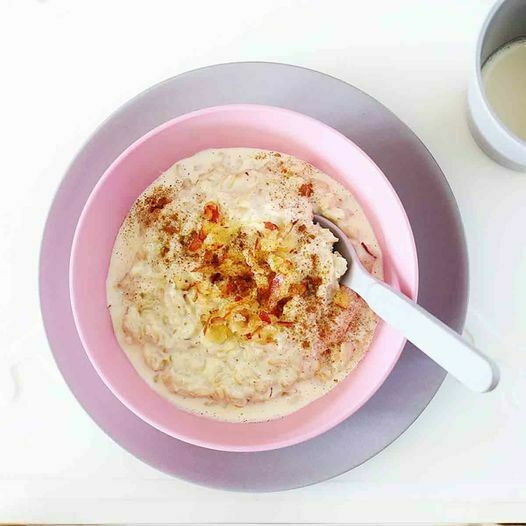
I know you lovely ladies love your porridge in the mornings which is perfect for the Vata season. Here is a little recipe to mix things up a bit, let me know how it goes and would love to see your pictures
Oatmeal with Apples + Cardamom
Ingredients:
1 teaspoon ghee/butter/coconut oil
1 small apple, peeled and diced - green is best
1/8 teaspoon cardamom
1/3 cup rolled oats
1 cup water
¼ cup oatmilk or other non-dairy milk
1 teaspoon hemp seeds
Preparation:
Heat ghee/oil over medium heat in a small pot. Add the apple and cardamom and cook until apple is soft, about 3–4 minutes.Add oats and water, and turn heat to low. Cover and cook 4–5 minutes, stirring occasionally. Add the oatmilk (or other milk) and cook until your desired texture is achieved (feel free to add more milk as you like).Top with hemp seeds to keep your thyroid in good working order.
Adaptions:
Kapha- add a little dry ginger to the apples and cardamom
Vata - add cinnamon to the apples and cardamom
Pitta - add honey on top for some gorgeous sweetness (but don't add during cooking time as this changes the properties)
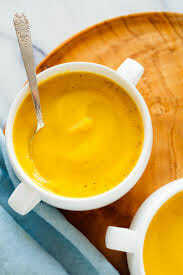
As Vata rises you want to move away from raw salads to warm, cooked root veggies to support your digestion and leave you feeling supported. Squashes that are a little bit heartier and less light so the perfect veggie choice. Enjoy this delicious soup any time of day as you savor the cooler temperatures and favor the warmer foods!
Vata soup
Ingredients:
1 butternut squash
3-4 carrots, peeled and chopped
¾ of a leek, chopped
1-2 bay leaves
1 tsp cumin seeds
¾ tsp turmeric
5 whole cloves
3 tbsp butter or ghee
4 cups water
Directions:
Preheat the oven to 400°. Poke quite a few holes into the squash with a fork and place in the oven. Roast the squash for 35–60 minutes, depending on the size. (You should be able to stick a knife all the way through the squash with no difficulty). While the squash is roasting, warm the butter in a large stock pot. Add the cumin seeds, cloves, and bay leaves to the butter or ghee, and sauté until an amazing aroma starts to fill your kitchen. When the cumin seeds start to pop, add the celery, carrots, and leek. Cook the veggies almost all the way— you can even close the lid of the pot to let some of the steam cook the veggies. Add the water, and let the veggies steep as the water comes to a boil. At this point, if the squash isn’t cooked, go ahead and turn the stove off so you don’t burn the veggies. When the squash is ready, take it out of the oven and let it cool completely. Cut the squash in half the long way, scoop out all the seeds and strings, and chop into large chunks. Add the squash to pot, and let it simmer. I generally will let it simmer for about 20–40 minutes. Turn off the stove, remove the bay leaves, and let the whole soup cool down. Blend the soup with an immersion blender or in a blender right before serving. Be sure to bring it back to a boil after you blend to ensure it’s nice and warm. Serve with some delicious French bread and enjoy!
Adaptions;
- if you have more Kapha present at the moment you may want to add a little ginger and chilli to spice things up
- if you have more Pitta present at the moment you may want to add some fresh coriander at the end
Herbs for Vata Season
*Always check with your doctor for potential effects on prescribed medications before taking herbal medicines and supplements
Ashwaganda, a great herb for Vata season due to it's potential to help with anxiety Scientific studies have suggested that ashwagandha might be beneficial for a number of conditions. There is evidence to support the use of ashwagandha for the following and has been used in India for thousands of years for these conditions:Stress and anxiety - Ashwagandha may have a calming effect on anxiety symptoms when compared with the drug lorazepam, a sedative and anxiety medication. A 2000 study suggested that the herb had a comparable anxiety-reducing effect with lorazepam, suggesting that ashwagandha might be as effective for reducing anxiety. However, the researchers conducted this study in mice, not humans. In a 2019 study in humans, researchers found that taking a daily dose of 240 milligrams (mg) of ashwagandha significantly reduced people’s stress levels when compared with a placebo. This included reduced levels of cortisol, which is a stress hormone. In another 2019 study in humans, taking 250 mg or 600 mg of ashwagandha per day resulted in lower self-reported stress levels, as well as lower cortisol levels.
Arthritis - Ashwagandha may act as a pain reliever, preventing pain signals from traveling along the central nervous system. It may also have some anti-inflammatory properties. For this reason, some research has shown it to be effective in treating forms of arthritis, including rheumatoid arthritis. A small 2015 study in 125 people with joint pain found the herb to have potential as a treatment option for rheumatoid arthritis.
Heart health - Some people use ashwagandha to boost their heart health, including lowering high blood pressure lowering high cholesterol, easing chest pain, preventing heart disease. One 2015 study in humans suggested that ashwagandha root extract could enhance a person’s cardiorespiratory endurance, which could improve heart health.
Alzheimer’s treatment - According to a 2011 review, several studies have examined ashwagandha’s ability to slow or prevent loss of brain function in people with neurodegenerative conditions such as Alzheimer’s disease, Huntington’s disease, and Parkinson’s disease. As these conditions progress, parts of the brain and its connective paths become damaged, which leads to loss of memory and function. This review suggests that when mice and rats receive ashwagandha during the early disease stages, it may be able to offer protection.
Cancer - The same 2011 review also describes a few promising studies that found that ashwagandha might be able to stop cell growth in certain cancers. This includes reducing lung tumours in animal studies.
AVOID IF PREGNANT and also make sure you buy from a reputable supplier as many poor quality products contain heavy metals.
Take in accordance with the recommendations from the supplier due to varying degrees of potency. I will often add a teaspoon to a golden milk drink each day for a few weeks for those times when anxiety is feeling a little overwhelming
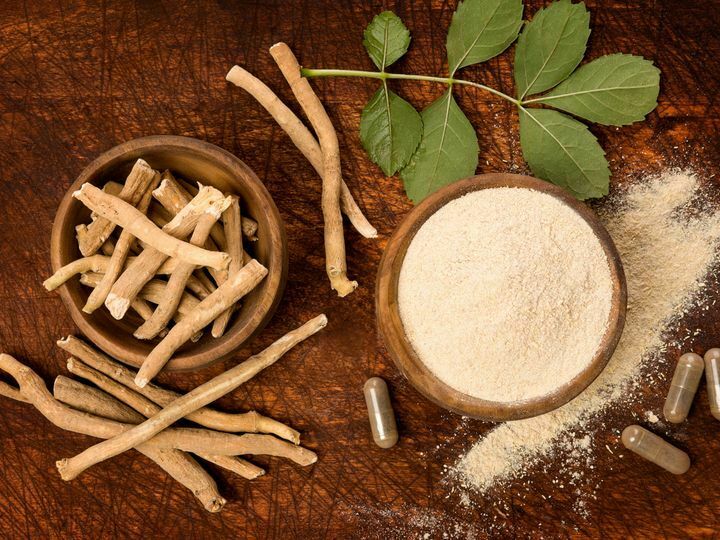
Asafoetida also known as....Hing or "effective in thousands of ways" as is great for vata digestive issues
Uses: Helps bloating of the abdomen, Reducing colicky pain, Reduces constipation, Good for the eyes, Good for heart, cardiac tonic
Avoid if have you have lots of heat in the system as can be aggravating to pitta dosha
Avoid during menstruation
Avoid this in bleeding disorders - It has blood thinning effect, hence it may delay clotting
Not advised in children, pregnancy and lactation period
People taking medicine for high blood pressure should take care while using Hing, since it reduces blood pressure. Take Asafoetida powder (resin) 125 – 200 mg per day until symptoms reduce (or as directed by Ayurvedic doctor).
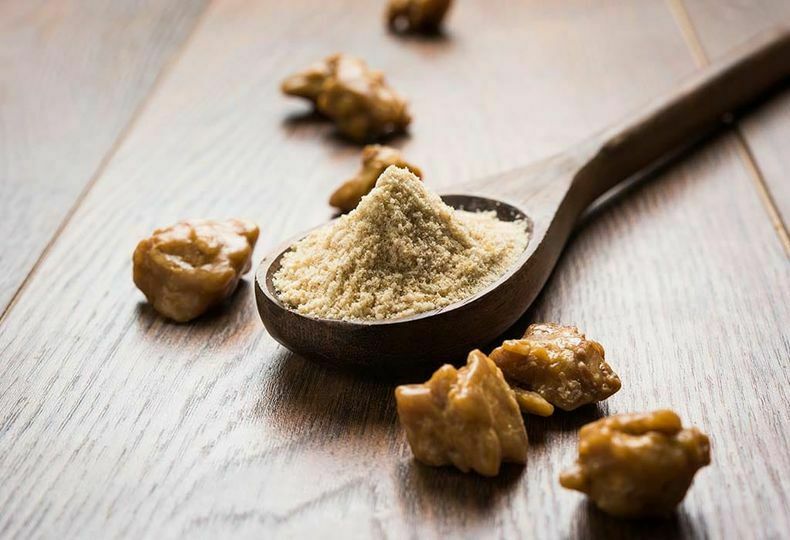
Shatavari also known as...."she who possesses a hundred husbands"
Uses: Rejuvenating (especially for women) Supports the nervous, circulation, respiratory, digestive and reproductive systems, Demulcent for dry and inflamed membranes of lungs, stomach, kidneys and sex organs, Emollient for stiff joints, neck, and muscle spasms, Good during the menopause or for those who have had a hysterectomy Avoid if have excess mucus as this will stimulate the body to produce more fluids. Take in warm milk with honey to rejuvenate the body
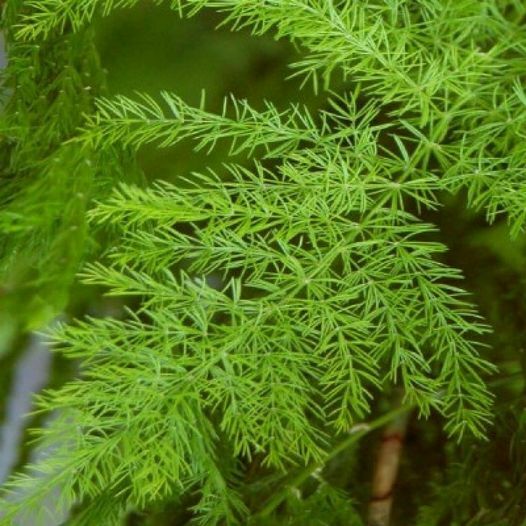
VATA season/imbalance
Create your Dinacharya (daily rituals)
Download more information on how to create your Dinacharya here......
DinacharyaMeditations (audio)

Listen to Guided Abhyanga massage meditation.aac by Your Inner Truth on #SoundCloud
https://soundcloud.app.goo.gl/...

Listen to morning motivation .aac by Your Inner Truth on #SoundCloudhttps://soundcloud.app.goo.gl/...

Listen to healing energy meditation .aac by Your Inner Truth on #SoundCloud https://soundcloud.app.goo.gl/...

Listen to chakra meditation week 1.aac by Your Inner Truth on #SoundCloud
https://soundcloud.app.goo.gl/...

Listen to stepping into the ideal you.aac by Your Inner Truth on #SoundCloud
https://soundcloud.app.goo.gl/...

Listen to journey to your guide .aac by Your Inner Truth on #SoundCloud
https://soundcloud.app.goo.gl/...

Listen to Reviewing your journey .aac by Your Inner Truth on #SoundCloudhttps://soundcloud.app.goo.gl/...

Listen to breath awareness meditation .aac by Your Inner Truth on #SoundCloudhttps://soundcloud.app.goo.gl/...

Listen to effortless awareness meditation to restore calm by Your Inner Truth on #SoundCloudhttps://soundcloud.app.goo.gl/...
Kapha season recipes (late Winter - Spring)
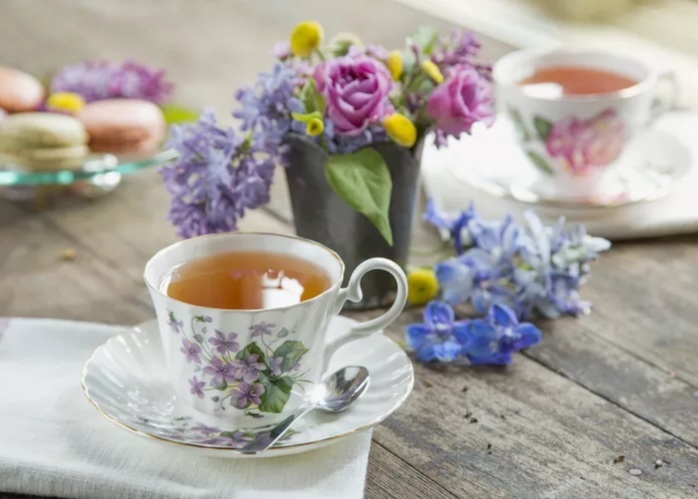
Kapha tea ☕ a great way to get rid of stagnation!
Ingredients
1/4 teaspoon dry ginger
1 clove
1/4 teaspoon dill seed
1/4 teaspoon fenugreek seed
1 cup boiling water
Preparation
Mix the ginger, clove, dill seed, and fenugreek seed together.
Add the boiling water to the herb and spice mixture.
Steep for 5 minutes, covered.
Strain and discard the herb and spice mixture and serve hot.
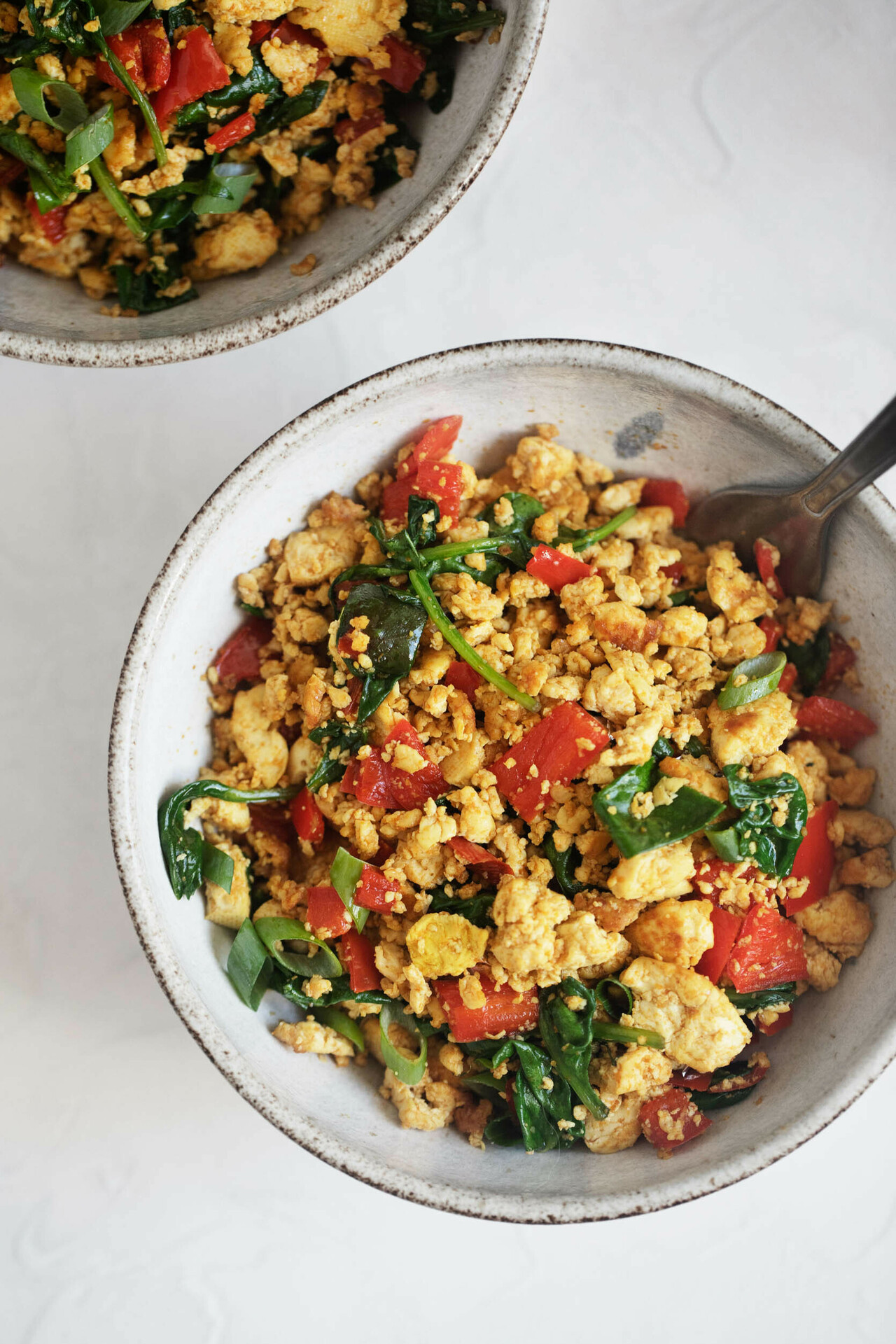
Tofu Scramble with Kale, Fennel & Tomato
INGREDIENTS
1/2 tsp CUMIN
1/2 fresh FENNEL
1 tbsp GHEE
2 cups KALE
1/4 pinch RED PEPPER FLAKES (CHILI)
1 c TOFU
2 whole TOMATOES
1/4 tsp TURMERIC
1. Drain tofu and firmly pat dry with absorbent towels to remove moisture. Then, use a fork to crumble.
2. In a non stick pan, heat 1 tbsp ghee and gently fry cumin, turmeric and chilli powder for 1-2 minutes.
3. Saute chopped kale, tomato and fennel for 5 minutes, then add crumbled tofu.
4. Continue to cook for another 5 - 7 minutes until tofu is coated in spices and cooked through.
Adaptions;
High Pitta - leave outor reduce the chilli and tomatoes, instead add fresh coriander
High vata - leave the kale out and/or add more ghee/sesame oil to garnish
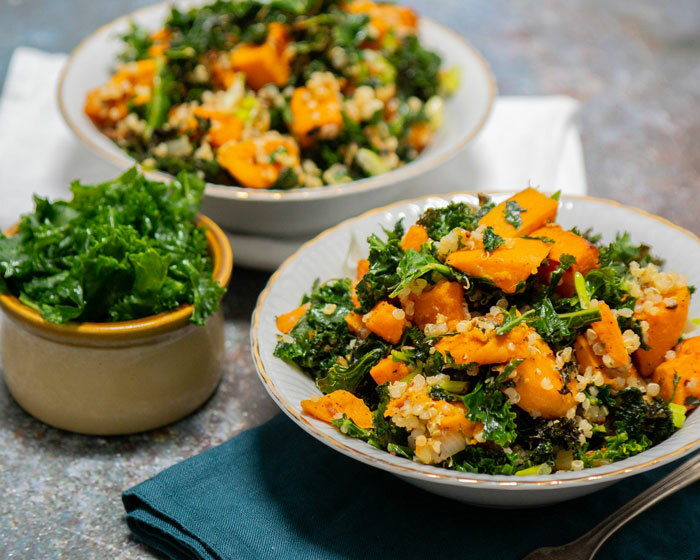
Warm Quinoa, Sweet Potato and Kale Salad
3 packed cups: Kale
1 cup Pomegranate seeds, fresh
1/4 cup Red onion
1: Sweet potato, medium large
1 tbsp Maple syrup, pure
3 cup Quinoa, cooked
1 tsp Paprika, sweet
1 Pepper, freshly cracked
1 Sea salt
1 1/2 tbsp Olive oil, extra virgin
1/4 cup Orange juice, fresh
3 cups Vegetable or chicken stock or water
Place quinoa in a fine-mesh strainer and rinse thoroughly with cool water for at least 2 minutes. Drain. Rinsing quinoa before cooking will remove its natural bitter or soapy taste.
Transfer to a saucepan, cover with stock, cover with a lid and bring to a boil. Reduce heat and cook for 15 minutes on the lowest setting. Turn off the heat and let stand covered for 5 minutes. Fluff with a fork and set aside.
Heat olive oil in a non-stick pan. Add sweet potatoes and paprika. Season with sea salt and freshly cracked pepper, to taste. Stir to cover the sweet potatoes with the spice.
Cook on medium heat until brown on the outside and soft on the inside, about 10 minutes. When they are almost ready, stir in maple syrup and finish cooking.
Add kale and cook until wilted, about 5 minutes.
Add 3 cups of cooked quinoa, stir and cook until warm.
Turn off the heat and add onion and pomegranate.
In a small bowl, whisk together orange juice and olive oil. Season with sea salt and freshly cracked pepper, to taste. Drizzle over warm salad, toss and serve immediately.
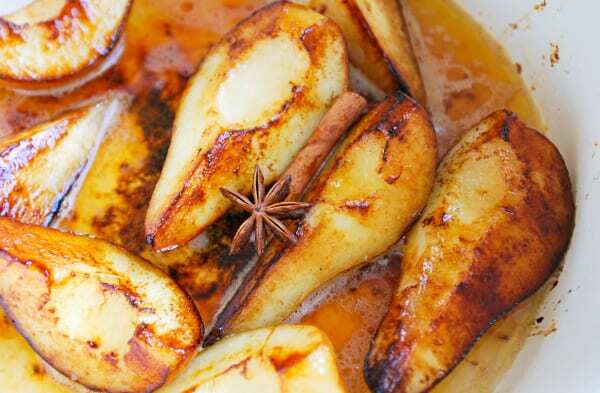
Roasted pears with raisins - beautiful for breakfast for kapha season
The spicing is so subtle that it is unlikely to aggravate pitta, and as the pears are baked it shouldn't cause vata any problems either - enjoy!
INGREDIENTS
1/2 tsp CINNAMON
1/2 tsp CLOVES
2 tbsp OATS / OATMEAL
4 whole PEARS
1/4 cup RAISINS
1/2 tsp STAR ANISE
1/2 cup of pecans
Preheat oven to 350.
Powder the spices in a coffee grinder or pulverize with a mortar and pestle.
Peel and halve the pears, slicing out the core.
Place pears in a baking pan. Add 1/4 cup of water.
Sprinkle with spices and raisins.
Bake, covered, for one hour or until pears are tender.
Uncover, sprinkle rolled oats and, optionally, pecans.
Broil for five minutes for a grilled effect.
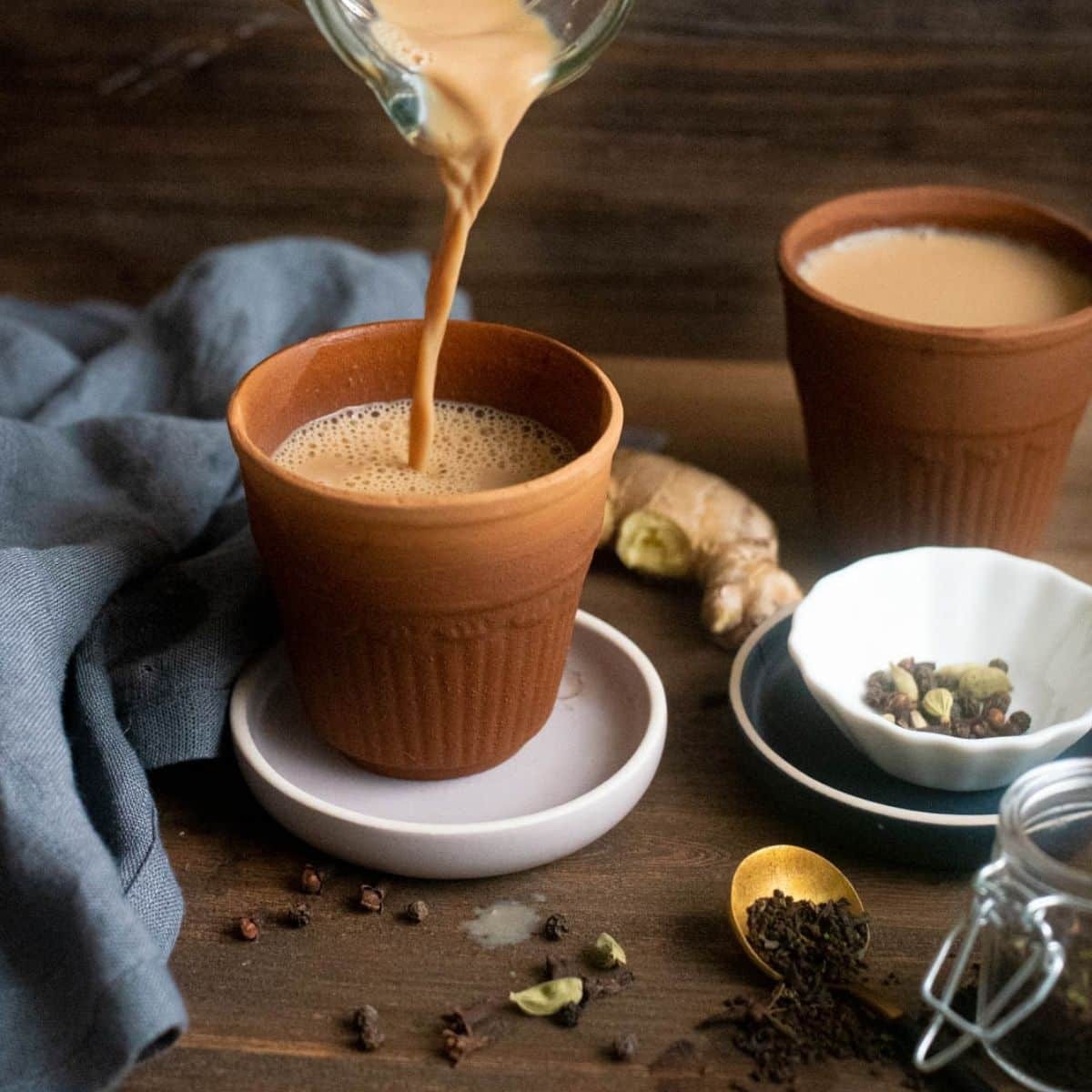
Kapha Chai Recipe (For 4 cups) - perfect to warm you up on those colder mornings
Ingredients:
6 cups Water
3″ long Fresh Ginger Root, Grated
5 Cinnamon sticks
10 Cardamom pods
5 Cloves
10 Peppercorns
3 English Breakfast Tea bags OR Tulsi Tea
2 cups organic cow’s/goat’s or almond milk
Honey to taste
Preparation:
Grate the fresh ginger root and put it a pot with the others spices and the water.
Bring to boil, then simmer for 10 minutes.
Add the tea bags and milk, keep on simmer until hot.
Pour in cups and add honey to taste.
Take some time to fully enjoy!
For excess pitta reduce the peppercorns by half or leave out completely!
This recipe is all good for vata
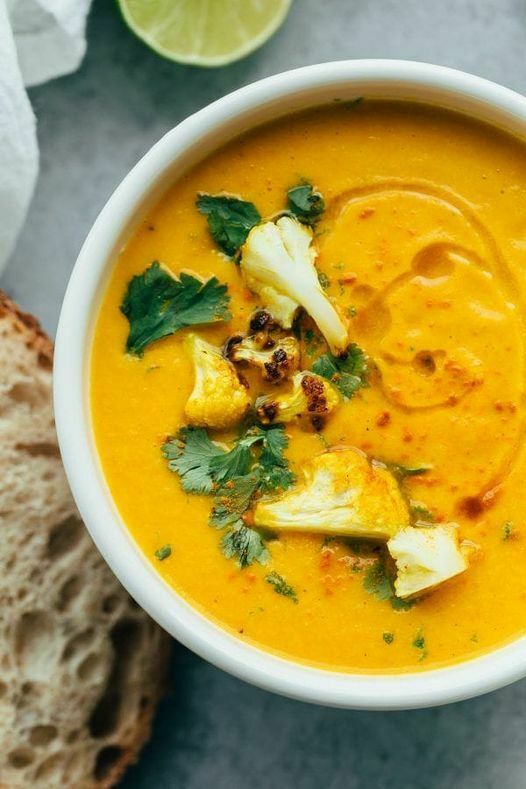
Spiced cauliflower soup: This is the perfect recipe to lighten up your diet amongst the heavy food this festive season plus these spices will keep your digestive fires strong so you can metabolise the Christmas goodies! This is great for all the dosha types although if you have lots of vata energy in you digestive system (gas and bloating) you may wish to add a teaspoon of fennel seeds
3 pounds whole cauliflower (about 1 1/2 medium heads or 8 cups of florets)
6 medium garlic cloves
6 tablespoons extra-virgin olive oil, divided, plus additional for garnish1
3/4 teaspoon kosher salt,
1 large yellow onion
1 carrot
6 to 7 cups vegetable broth
1 1/2 teaspoons cumin seeds
1 1/2 teaspoons coriander seeds
1 teaspoon ground ginger
1 teaspoon turmeric
1 teaspoon cinnamon
1/4 teaspoon black pepper
Sliced spring onions and coriander leaves for garnish
Paprika, for garnish
1. Preheat the oven to 220 degrees.
2. Chop the cauliflower into florets. Peel the garlic, keeping the cloves whole. Place the cauliflower and garlic in a large bowl and stir together with 3 tablespoons olive oil and 1 teaspoon kosher salt.
3. Line a baking sheet with parchment paper or a silicon mat, and place the cauliflower in an even layer on top. Roast for 30 to 35 minutes until lightly blackened and very tender, stirring once.
4. Meanwhile, dice the onion. Peel and dice carrot.
5. In a large pot heat 2 tablespoons olive oil over medium high heat. Saute the onion and carrot until the onion is translucent, about 5 minutes.
6. Add 6 cups vegetable both and the cumin, coriander, ginger, turmeric, cinnamon, and black pepper, and bring it to a boil.
7. Simmer for 10 to 15 minutes while the cauliflower roasts.
8. When the cauliflower is done, use a spoon to remove about 3/4 cup of the smallest florets for the garnish. Then pour the remaining roasted cauliflower, salt and garlic into the broth mixture.
9. Puree with a blender until smooth (or pour into a blender and blend until smooth, taking care that the liquid is very hot).
10, Serve immediately, topped with the reserved cauliflower, sliced spring onions and/or coriander, additional olive oil (if desired), and a sprinkle of paprika.
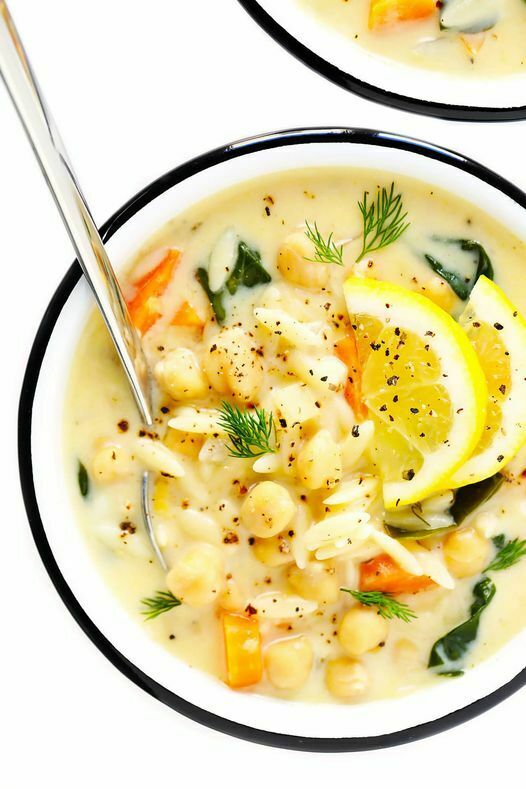
Lemon Orzo Soup So your liver maybe feeling the effects of excess over the past week so a great opportunity to introduce more lemon to help with the cleansing process. Here is a gorgeous recipe that will be suitable for all the doshas. Kapha may wish to ramp up the pepper and vata could handle a little more oil on top. Enjoy
INGREDIENTS
1 tablespoon ghee or olive oil
½ onion, diced
3 carrots, peeled and diced
3 cloves garlic, minced
7 – 8 cups vegetable broth or water (or combo)
1 cup whole wheat orzo
2 cans (15oz.) chickpeas, drained and rinsed
⅓ cup tahini
¼ – ½ cup lemon juice (about 2 – 4 large lemons)
a large handful fresh baby kale or spinach
chopped fresh dill, to tastemineral salt, to taste
fresh cracked pepper or lemon-pepper, to taste
INSTRUCTIONS
Heat oil or water over medium heat, add onion and carrot, saute for about 5 – 7 minutes, add the garlic and saute for 1 minute more. Add the broth or water, bring to a boil, add the orzo and chickpeas, reduce heat to medium-low and cook at a gentle boil for 8- 9 minutes, orzo should be tender.Remove from heat, add tahini and lemon juice (start with the smaller amount of juice, adding more to taste), stir well. Add the baby kale or spinach, give a good stir, greens will soften and wilt within a few minutes. Add as much dill as you like, and season well with salt & pepper. Soup will thicken upon standing, add more liquids as needed.Serve in individual bowl with your favorite crusty artisan bread for soaking up the wonderful juices.(Serves 4)
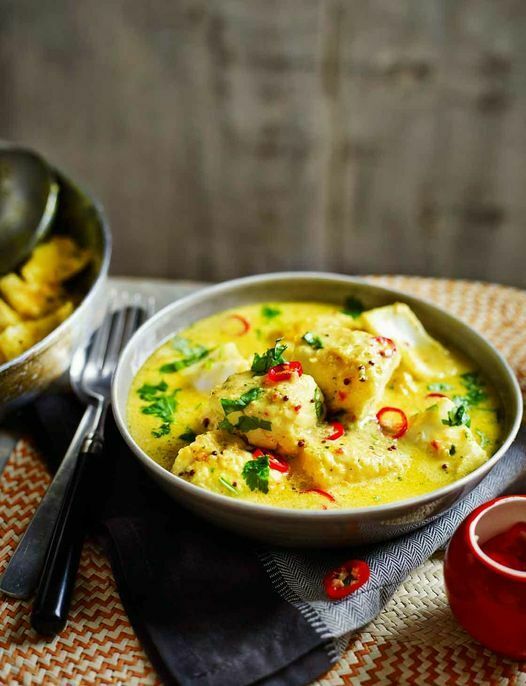
This weeks recipe is a gorgeous Coconut Fish Curry. If you are experiencing a lot of pitta then cut back on the chilli (and you may want to anyway if you are not a big fan of heat). This recipe is suitable for vata as is, although you could substitute the broccolini for another vegetable if you have a lot of gas in the system.
4 cloves garlic, peeled and chopped.
1 5cm knob ginger, fresh, chopped.
1 tablespoon turmeric, ground.
2 teaspoons fennel seeds.
1 teaspoon coriander, ground.
1/4 teaspoon cumin, ground.
1 tablespoon curry powder.
1 long red chilli, seeds removed, chopped.
1 tablespoon fish sauce.
1/2 teaspoon sea salt.
1 tablespoon coconut oil.
1 red onion, finely chopped.
1 small bunch coriander, leaves removed and stems finely chopped.
400 ml full-fat coconut milk.
500 ml homemade chicken, fish or vegetable stock.
2 bunches broccolini, sliced in half lengthways.
600 g white fish fillets.
1 cup basmati rice.
Coriander leaves.
Extra: chilli, fresh.1 lime, sliced into wedges.
1. First prepare the washed rice by placing it into a pot with 2 cups of boiling water, bring to the boil then reduce heat to low and leave to cook, covered until water has absorbed. Fluff with a fork to serve.
2. In a small food processor, make a paste with the garlic, ginger, turmeric, fennel seeds, coriander, cumin, curry powder, chilli, fish sauce, salt and 30ml hot water.
3. Heat coconut oil in a large pot over a medium heat, add in onion and coriander stems and sauté for 5 minutes until fragrant. Add in the paste and cook for 5 minutes, until fragrant, then pour in the coconut milk and stock. Cover and bring to the boil.
4. Reduce the heat to low and carefully place the fish pieces and broccolini into the liquid. Leave to simmer on low, uncovered for 7–10 minutes, or until fish is cooked through. This will vary depending on the thickness of your fish.
5. Serve with a scoop of rice and top with coriander leaves, chilli, and a squeeze of lime.
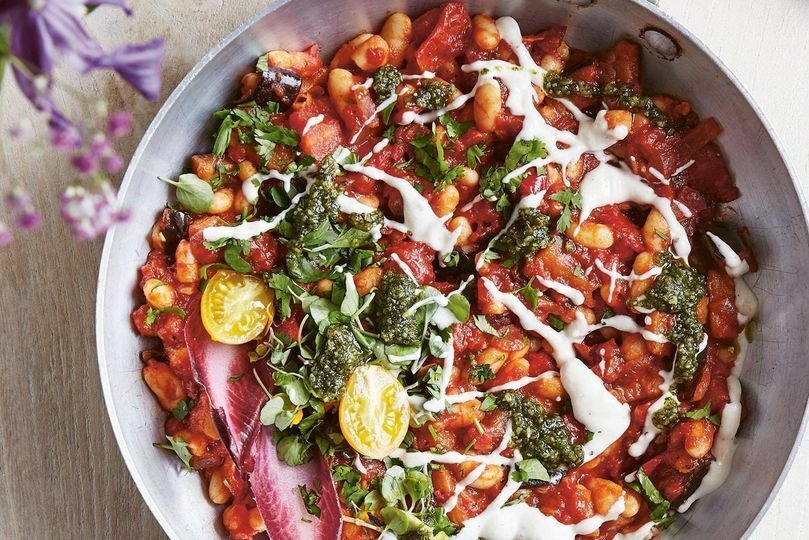
Shakshuka With Butter Beans. This recipe is fine if you have a lot of vata in the system however I would avoid if you are experiencing a lot of pitta inflammation at the moment due to the nightshade vegetables. This is gorgeous served with some crusty bread, salad and a drizzle of pesto.
2/3 cup olive oil
1/2 red onion, chopped
1/2 red (bell) pepper, chopped
1/2 aubergine, chopped
1 x 400 g (4 oz) tin of tomatoes
230 g (8 oz) tinned butter beans, drained
4 sundried tomatoes, chopped
1/2 teaspoon sweet paprika
pinch of cayenne pepper
salt and black pepper, to taste
a handful of chopped parsley, dollops of plant yoghurt and lemon wedges
In a medium pan, heat the oil and fry the onion, pepper and aubergine with a tiny pinch of salt for 10–15 minutes.
Then add the tomatoes, beans, sundried tomatoes and all the spices and seasoning, give it a good stir and leave on a medium heat, covered, for 10 minutes.
Check on the mixture when the time is up, give it a stir and leave for another 10 minutes.
By now the shakshuka should be done, the liquid should have mostly cooked off and turned sticky and there should be a smoky gorgeous mixture in your pan.
Serve with some plant yoghurt and lemon wedges to squeeze over.
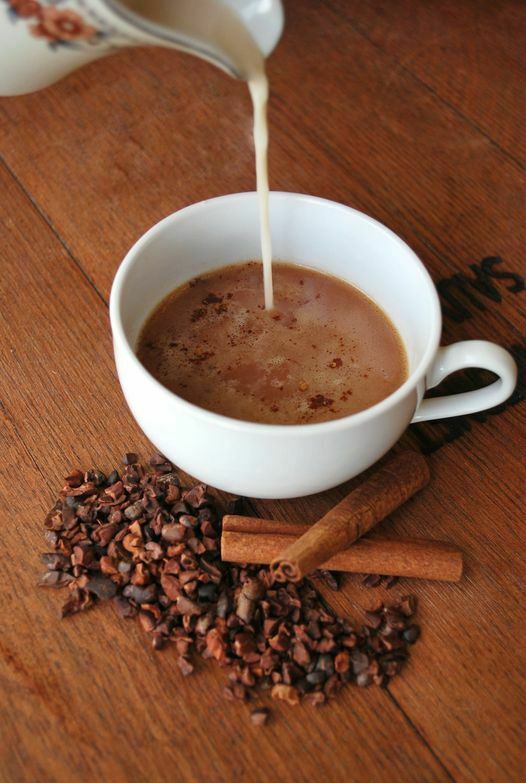
Looking for an alternative to your morning coffee - try this
KAPHA-PACIFYING MOLTEN CACAO
1 cup boiling water
1 tbsp cacao powder
1/8 – 1/4 tsp cinnamon
1/8 – 1/4 tsp cloves
1/8 – 1/4 tsp cardamon
1/4 tsp dried ginger (or one inch fresh, chopped)
a *pinch* of cayenne
put all the ingredients into a mug, pour the water over and stir.
Once cool enough drink and enjoy!
For vata: adding organic cream or warm milk will makes this more grounding and also a little raw sugar.
For pitta: omit the cayenne and add a splash of milk or a little honey if you want.
For kapha: add honey if you need a little bit more sweetness.
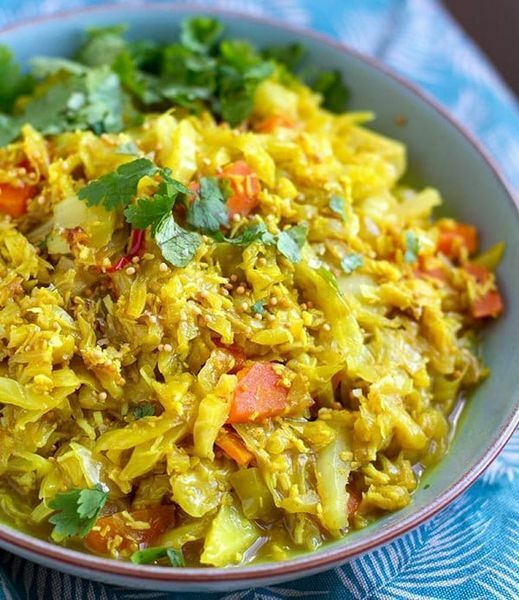
Cabbage is the perfect ingredient during Kapha season and the added spice in this will also ramp up your digestive fires to help shift any stagnation cut back on the heat for pitta imbalance and for vata you may want to add a tablespoon of fennel seeds to counteract any gassiness caused by the the cabbage!
Sri Lankan style Cabbage
INGREDIENTS
1 tablespoon coconut oil
1 medium onion, halved and sliced
1 + 1/2 teaspoons salt
2 large cloves of garlic, diced
1/2 long red chili, sliced
1 tablespoon yellow mustard seeds (or 1 teaspoon mustard powder)
1 tablespoon mild curry powder
1 tablespoon turmeric powder
1 medium cabbage, quartered and shredded or sliced (core removed)
1 medium carrot, peeled and sliced
2 tablespoons lime or lemon juice
1/2 cup desiccated unsweetened coconut
1 tablespoon olive oil
1 cup water
1. Add the coconut oil, onion and half of the salt to a pan on medium heat and sauté until softened.
2. Add the garlic, chili and spices and stir through for 20-30 seconds.
3. Add the cabbage and carrots, lime juice, coconut and olive oil and stir through. Add the water and stir through.
4. Cook until the liquid has absorbed and the cabbage is soft
5. Serve with rice or beans, or as a side dish with fish or chicken.
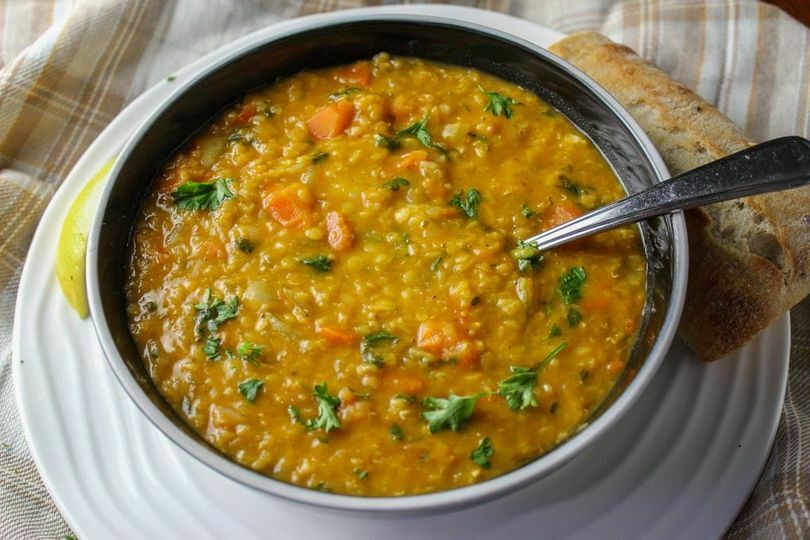
Kapha pacifying lentil soup
Ingredients
1 cup lentils (brown) - feel free to swap for a bean if allergic!
6 cups water
1 cinnamon stick
1 tsp turmeric powder
2 tsp ground coriander
2 tsp peeled and minced fresh ginger
1 tsp salt
1/2 tsp black pepper
2 Tbl ghee/or olive oil1 tsp cumin seeds1 tsp mustard seeds
4 Tbl coarsely chopped fresh flat leaf parsley.
2 cups of roasted veggies of choice
Directions
1. Soak lentils overnight - wash and drain the lentils
2. Combine the lentils, water, cinnamon stick and spices in a large pot, except the cumin and mustard seeds. Stirring occasionally, bring to a full boil over high heat. Reduce the heat to a simmer, once it boils. Cook for one hour or until the lentils are soft and fully cooked. Stir occasionally to prevent sticking and add water as needed to cook lentils to desired consistency.
3. Heat the ghee/oil in a small saucepan over high heat. When it is hot, add the cumin and mustard seeds then fry until the seeds turn brown, careful as they will pop and burn if left in too long. Put a small amount of soup into the cooked spices and mix, then pour into the larger pot. Cover for 1-2 minutes.
4. Remove from heat.
5. Serve garnished with roasted veggies and parsley.
Serves 4-6 people. You can also blend this up for a smoother finish. I usually blend for my kids and add lime juice right before serving with a piece of sourdough.
For pitta imbalance remove cinnamon and mustard seeds No adaptions needed for vata
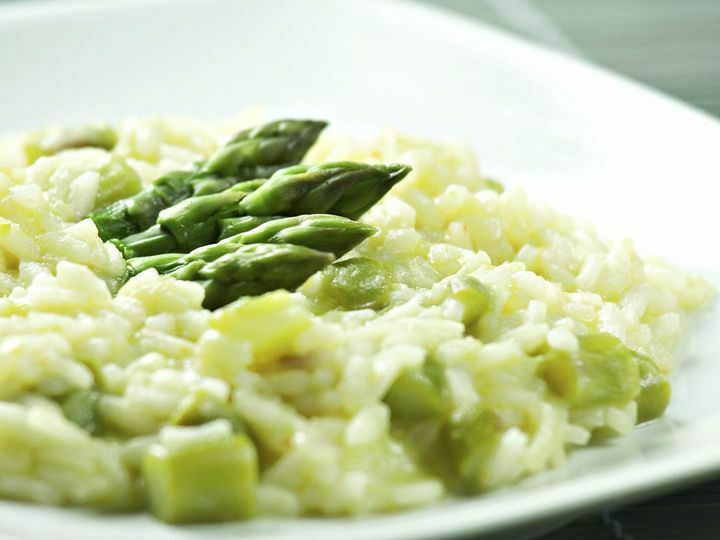
Asparagus season is upon us!! And here is a recipe that is suitable for all the doshas...enjoy
ASPARAGUS AND SAFFRON RISOTTO
2 cups asparagus
¼ teaspoon black pepper
1 teaspoon cumin seeds
2 tablespoons ghee
¼ of a lemon (juice only)
1 cup risotto
2 pinches saffron threads
½ teaspoon mineral salt
Grind saffron with a mortar and pestle. Add a few drops of water and continue grinding until saffron is completely dissolved. Let sit ten minutes.
Bring 1 litre of water to a boil and lower heat. Clean and dice asparagus. Sauté the cumin seeds in ghee in a large pot. Add risotto, asparagus, black pepper, saffron, and lemon to the cumin while the seeds are still aromatic—before they begin to brown.
Sauté for an additional 30 seconds. Add salt and 1 cup of the boiling water and lower heat to a simmer. Continue adding 1 cup of the boiling water every five minutes until you have added all the water. Taste the risotto to check its cooked. It should be soft and have a slight bite.
Add a little parmesan if desired for a classic garnish. Vegans can substitute ghee with coconut oil.
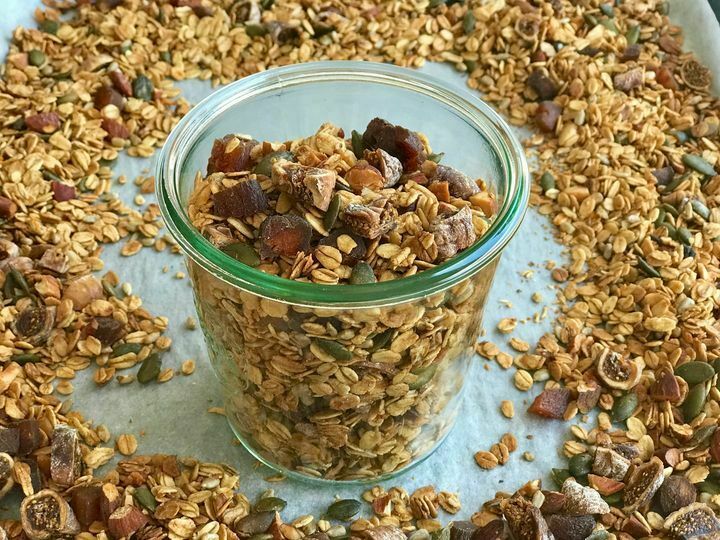
Springtime 5-Spiced Granola
Ingredients:
3 cups old-fashioned rolled oats (not quick oats)
1 ½ cups raw seeds like sunflower, pumpkin, hemp, and sesame seeds
1 teaspoon cardamom powder
1 teaspoon cinnamon powder
½ teaspoon fennel powder
½ teaspoon ginger powder
¼ teaspoon star anise powder (optional)
½ teaspoon vanilla bean powder or 1 tsp vanilla extract
Pinch of Himalayan salt
¼ cup sunflower oil
2–3 tablespoons maple syrup
2 tablespoons molasses
½ cup raisins
½ cup chopped dried fruit like apricots, tart cherries, or cranberries
Directions:
Preheat oven to 150°c.
In a large bowl toss oats, seeds, spices, and salt. Set aside. In a smaller bowl, mix the oil, molasses, and maple syrup. Mix dry and wet ingredients together until all ingredients are well combined.
Evenly spread the granola out onto a large baking sheet and place the sheet into the preheated oven on the middle rack. Bake for approximately 30–40 minutes, gently mixing the granola every 10–15 minutes to ensure even cooking. You will know the granola is done when the oats are slightly toasted and the spices are fragrant.
Remove the granola from the oven and while the mixture is still hot, add the dried fruit. Another option is to gently sauté the fruit in a little ghee or sunflower oil before adding to the warm granola.
Adjust maple syrup to your taste; use 2 tablespoons if you prefer a not-so-sweet granola. If you tend to experience dryness/vata symptoms, add ⅓ or ½ cup of oil instead of ¼ cup.
If you prefer less spice in your granola or have alot of pitta, reduce spice quantities by half.
Enjoy your springtime granola, and experiment with customizing the ingredients to suit you.
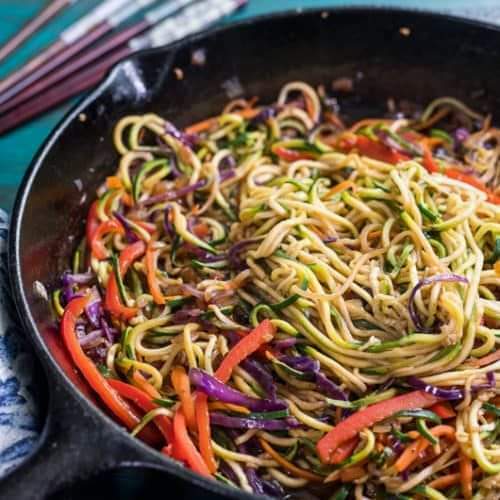
So courgettes aren't normally that great for kapha BUT let's consider why....Kapha is the elements of earth and water and courgettes have a high water content hence the reason it might send kapha out of balance so let's kapha it . When you cook it this way it drys out the water content and the chilli will warm it up making it easier to digest. A good example of how you don't have to cut anything out you enjoy - just adapt what you do with it
Cougette Noodles Chow Mein
1 large Carrot
1/4 cup parsley
4 cloves of Garlic
1 small Onion
1 Red bell pepper
1 cup Red cabbage
2 medium courgettes
1 tbsp of sweet chilli sauce - feel free to add extra chillies if you want more heat
2 tbsp Soy sauce
Black pepper and fresh cracked Salt
1 tbsp of ghee or Olive oil
2 tsp Rice vinegar
1 Tablespoon oyster sauce or hoisin for vegetarian
1. In a dish mix together the vinegar, soy sauce, sweet chilli sauce and oyster/hoisin sauce
2. In a pan on a low/medium heat cook the onions and garlic (and chillies if adding extra) till fragrant
3. Slice vegetables fairly thin - feel free to spiralise the courgettes!
4. Add vegetables to the pan and cook till tender
5. Add sauce, parsley and season
6. Enjoy!
For vata imbalance: you may need to add meat, fish or actual noodles to make this heavier. You could also add stock to make more of a noodle soup consistency
For pitta imbalance: you may want to cut back on chilli and garlic and perhaps leave out the peppers
Kapha balancing food list
Download your Kapha balancing food list here....
Herbs for Kapha Season
*Always check with your doctor for potential effects on prescribed medications before taking herbal medicines and supplements
Triphala So I am cheating a little bit here as it is not a herb as such but a traditional Ayurvedic remedy.
Triphala is a mixture of the dried fruits of the following three plants native to India and literally means "3 berries" listed below....
1. Amla (Emblica officinalis)
More commonly known as Indian gooseberry, amla plays an important role in Ayurvedic medicine. Indian gooseberry and its extract are used in Ayurvedic medicine to treat symptoms like constipation and also used in cancer prevention. Indian gooseberries are very nutritious and high in vitamin C, amino acids and minerals.
Several test-tube studies suggest that Indian gooseberries have potent anti-cancer properties specifically the growth of cervical and ovarian cancer cells. However, there is no evidence as yet that Indian gooseberries prevent cancer in humans.
2. Bibhitaki (Terminalia bellirica)
Terminalia bellirica is a large tree that commonly grows in Southeast Asia. It’s known as “Bibhitaki” in Ayurvedic medicine, where the fruit of the tree is used as a treatment for common ailments like bacterial and viral infections.
This potent herbal remedy has a variety of uses and may help treat a wide array of medical issues. In particular, Bibhitaki has been researched for its anti-inflammatory properties.
Bibhitaki is also commonly used in Ayurvedic medicine to treat diabetes and blood sugar dysregulation. The plant chemicals help promote insulin secretion from the pancreas and have been shown to reduce high blood sugar and improve insulin resistance in animal studies.
3. Haritaki (Terminalia chebula)
Terminalia chebula is a medicinal tree that grows throughout the Middle East, India, China and Thailand. This plant is known as “Haritaki” in Ayurveda, where the small, green fruit of the Terminalia chebula tree is used as medicine. It is held in high esteem in Ayurveda and often referred to as the “king of medicines.”
It has been used since ancient times as a remedy for a number of conditions, including heart disease, asthma, ulcers and stomach ailments.
Studies have shown that haritaki has powerful anti-inflammatory and antioxidant properties.
Additionally, Haritaki is popularly used in Ayurvedic medicine to treat digestive issues like constipation.
Triphala is a powerful herbal remedy that consists of Haritaki, Bibhitaki and amla. It is used in traditional Ayurvedic medicine to prevent disease and treat a number of symptoms, including constipation and inflammation. It is also used during Ayurveda cleansing and short term to rebalance the digestive system and to speed up the metabolism.
It is a natural laxative so avoid if pregnant or depleted. It is also a blood thinner so may interact with other western medicines that thin or clot the blood.
Triphala can be sourced here https://www.essentialayurveda....
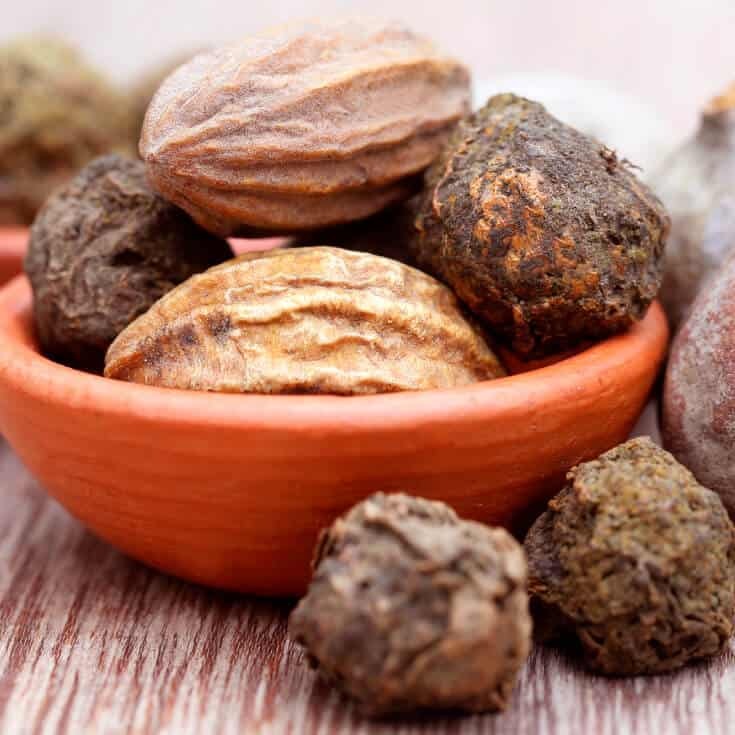
Pippali (long pepper) As we are in Kapha season I need to share with you this gorgeous fruit. it is helpful for removing imbalance from the respiratory, digestive and reproductive system causes by vata or kaphaIt is heating so avoid if prone to pitta imbalance It can be used to treat colds, coughs, asthma, bronchitis, arthritis, gout, gas in the digestion It's a powerful stimilulate for both digestion and respiratory so helps remove congestion and ama (toxins) but also it's rejuvenating it's also an aphrodisiac take in warm milk or tea - 3 pepper corns per cup in the morning with a little honey can help with excess mucus but beware as it is a close relative to black pepper Alternatively mix with black pepper and ginger to create a compound called trikatu to rejuvinate agni (digestive fires) and burn away ama....Recipe: Trikatu powderIngredientsDry ginger: 100 gDry pepper: 100 gDry pippali (long pepper): 100 gHoney: As requiredPreparationPowder dried ginger, pepper and pippali.Mix thoroughly and then sieve through a muslin cloth to get a fine powder (if taking as a powder instead of spice mix). This can be stored in an air-tight container for up to 6 months.Administering, mix 1½ teaspoon of powder with a little honey (have on it's own or in water) or use as a seasoning mix for food
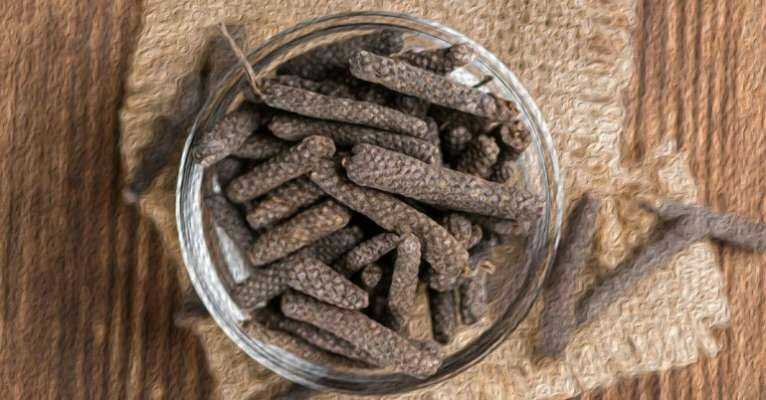
Burdock
So with our livers likely to be working overtime during Christmas I thought I would share with you the huge benefits of Burdock. Just to pre warn you, it tastes nothing like the yummy children's drink Dandelion and Burdock! This is good for both pitta and kapha but too much can increase vata as it is clearing (and vata is generally quite depleted) Good for:urinary system respiratory systemclearing lymphatic and bloodreducing inflammation Avoid if anaemic, depleted or high in vataburdock seeds are strongly diuretic and detoxifying and help relieve coughsBurdock root (this is what I use) is milder and less likely to increase vata and considered a great tonic and rejuvenative for pitta and can be clearing for excess pitta symptoms such as anger, aggression and overly ambitious. And here is my go to tea for the times I know my liver needs a little bit more love due to excess food/drink Equal parts;- Shatavari - licorice - cinnamon - ginger- fennel - burdock - orange peelMix together - use 1/4 cup of herbs to 4 cups water - bring to the boil, turn off and let steep for 30 mins. Drain and drink
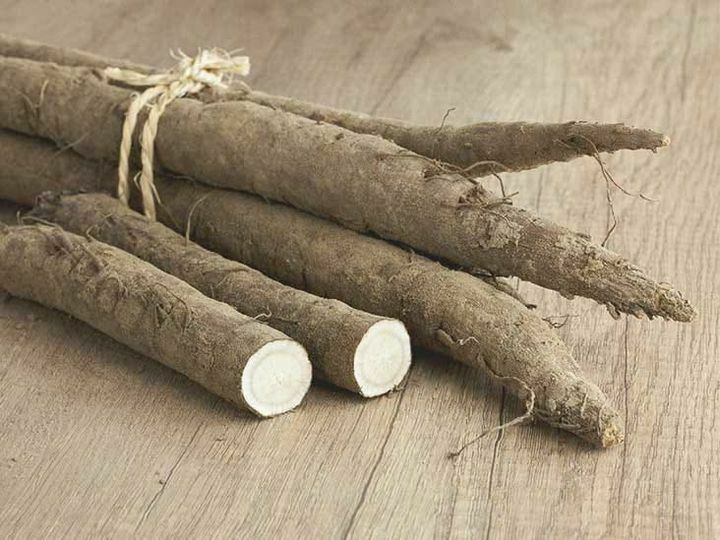
Pitta season/imbalance
Create your Dinacharya (daily rituals)
Meditations (audio)

Listen to Guided Abhyanga massage meditation.aac by Your Inner Truth on #SoundCloud
https://soundcloud.app.goo.gl/...

Listen to morning motivation .aac by Your Inner Truth on #SoundCloudhttps://soundcloud.app.goo.gl/...

Listen to healing energy meditation .aac by Your Inner Truth on #SoundCloud https://soundcloud.app.goo.gl/...

Listen to chakra meditation week 1.aac by Your Inner Truth on #SoundCloud
https://soundcloud.app.goo.gl/...

Listen to stepping into the ideal you.aac by Your Inner Truth on #SoundCloud
https://soundcloud.app.goo.gl/...

Listen to journey to your guide .aac by Your Inner Truth on #SoundCloud
https://soundcloud.app.goo.gl/...

Listen to Reviewing your journey .aac by Your Inner Truth on #SoundCloudhttps://soundcloud.app.goo.gl/...

Listen to breath awareness meditation .aac by Your Inner Truth on #SoundCloudhttps://soundcloud.app.goo.gl/...

Listen to effortless awareness meditation to restore calm by Your Inner Truth on #SoundCloudhttps://soundcloud.app.goo.gl/...
Pitta season recipes (late Spring - Summer)
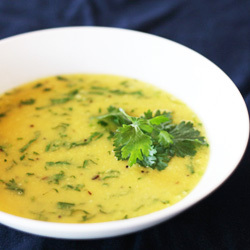
I know a few of you have been thinking about doing a cleanser so here is a lovely summer version of kitchari- particularly good for pacifying pitta
1 cup Basmati Rice
1/3 cup fresh Coriander
1/3 cup Coconut flakes
2 tbsp ghee
3/4 inch ginger (FRESH)
1/2 cup mung beans
1/4 tsp salt (MINERAL SALT)
1/2 tsp tumeric
6 cups water
Wash the mung beans and rice separately.
Soak the mung beans for a few hours, then drain.
Put the ginger, coconut, coriander and 1/2 cup water into a food processor and blend until liquefied.
Heat the ghee on medium in a large saucepan and add the blended items, turmeric and salt.
Stir well and bring to a boil to release the flavor.
Next mix in the rice, mung bean and the six cups of water.
Return to a boil. Boil, uncovered, for five minutes. Then cover, leaving the lid slightly ajar.
Turn down the heat to simmer and cook for 25-30 minutes, until the beans and rice are tender.
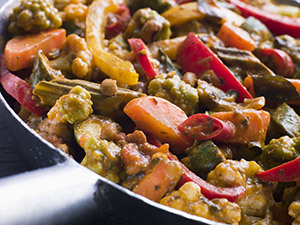
For those of you that like a bit of spice but don't want to send Pitta out of balance, I have just the thing and this is suitable for all the doshas! And also a great recipe to use up any left of veg.
MIXED VEGETABLE SUBJI
4 cups cut vegetables (green pepper, green beans, zucchini, yellow squash, etc.)
2 Tbs. ghee or safflower oil
1/2 tsp. cumin seeds
1/2 tsp. black mustard seeds
1/4 tsp. ajwan seeds
1/2 tsp. masala powder or cayenne
1/4 tsp. turmeric
1 pinch hing (asafoetida)
1/2 tsp. salt
1. Wash, trim and cut the vegetables into bite-sized pieces. Try cutting each vegetable into a different shape for a nice visual effect.
2. Heat a deep frying pan on medium heat and add the oil or ghee, then the cumin seeds, mustard seeds, ajwan and hing.
3. When the seeds pop, add the masala or cayenne and turmeric. Stir briefly, then put in the vegetables and salt. Stir to coat them thoroughly with the spices.
4. Turn down the heat to low and cover. Stir after 5 minutes.
5. Continue cooking on low for another 15 minutes or until the vegetables are just tender.
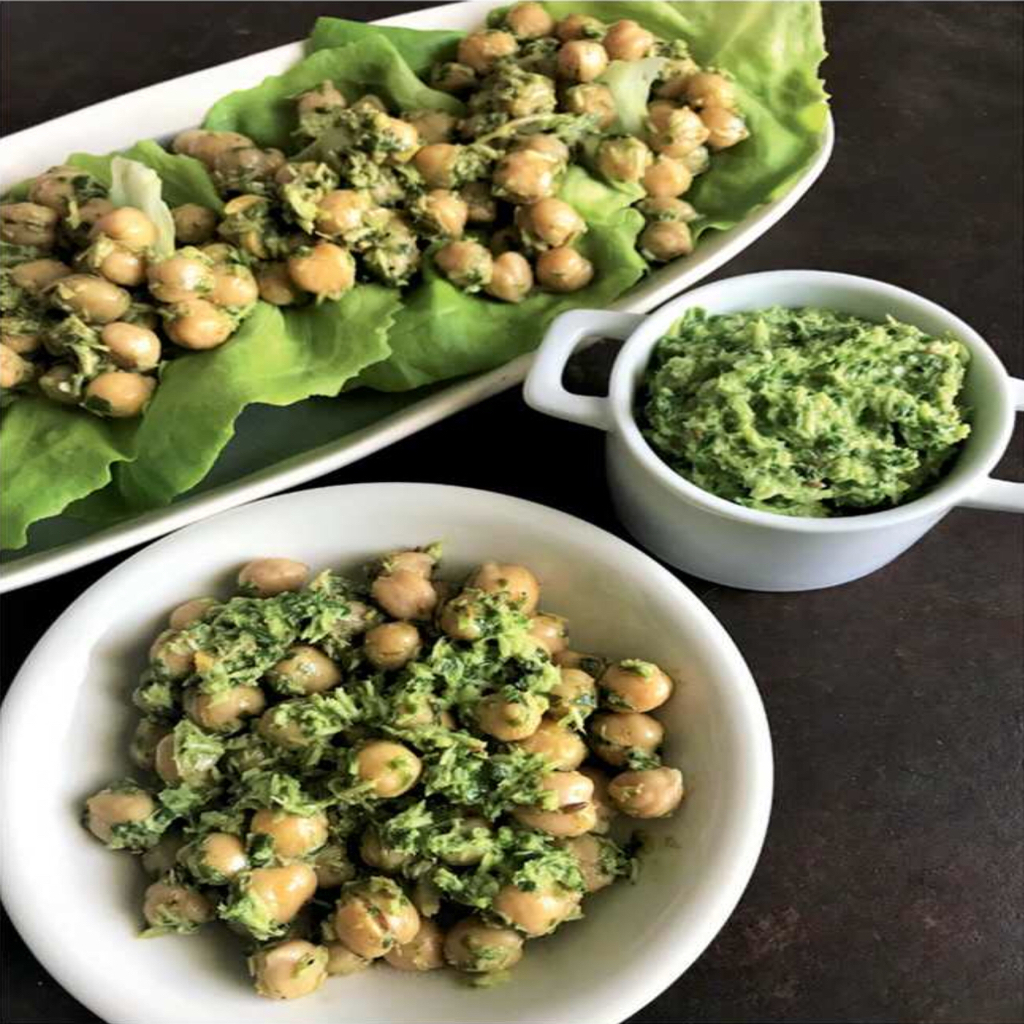
Chickpeas with coconut pesto - suitable for all dosha types
INGREDIENTS
1/2 cup BASIL
2 pinch CAYENNE PEPPER
1 cup CHICK PEAS
1/2 cup COCONUT MILK
1/2 LIME - juiced
1 tbsp OLIVE OIL
1/4 tsp SALT
1. Whisk together the olive oil, coconut milk, and lime juice until the consistency is smooth.
2. Stem and finely chop the basil and puree the coconut base, basil, and salt in a food processor to desired consistency. Set the pesto aside to marinate the flavors.
3. Drizzle olive oil in the bottom of a large frying pan. Strain then toss in canned or home-cooked chickpeas. Saute until they are lightly browned, and slightly crispy.
4. Turn off the heat, and pour the sauce into the pan and toss with the chickpeas. Serve by itself with a lemon slice or with salad, rice/cous cous.

Who needs a mojito??? Alcohol free obviously as we are in pitta season!
Just take....
1/4 of a whole LIME
1 tsp fresh MINT
1/4 tsp SUGAR
1 cup WATER
Blend up all the ingredients and enjoy - simple
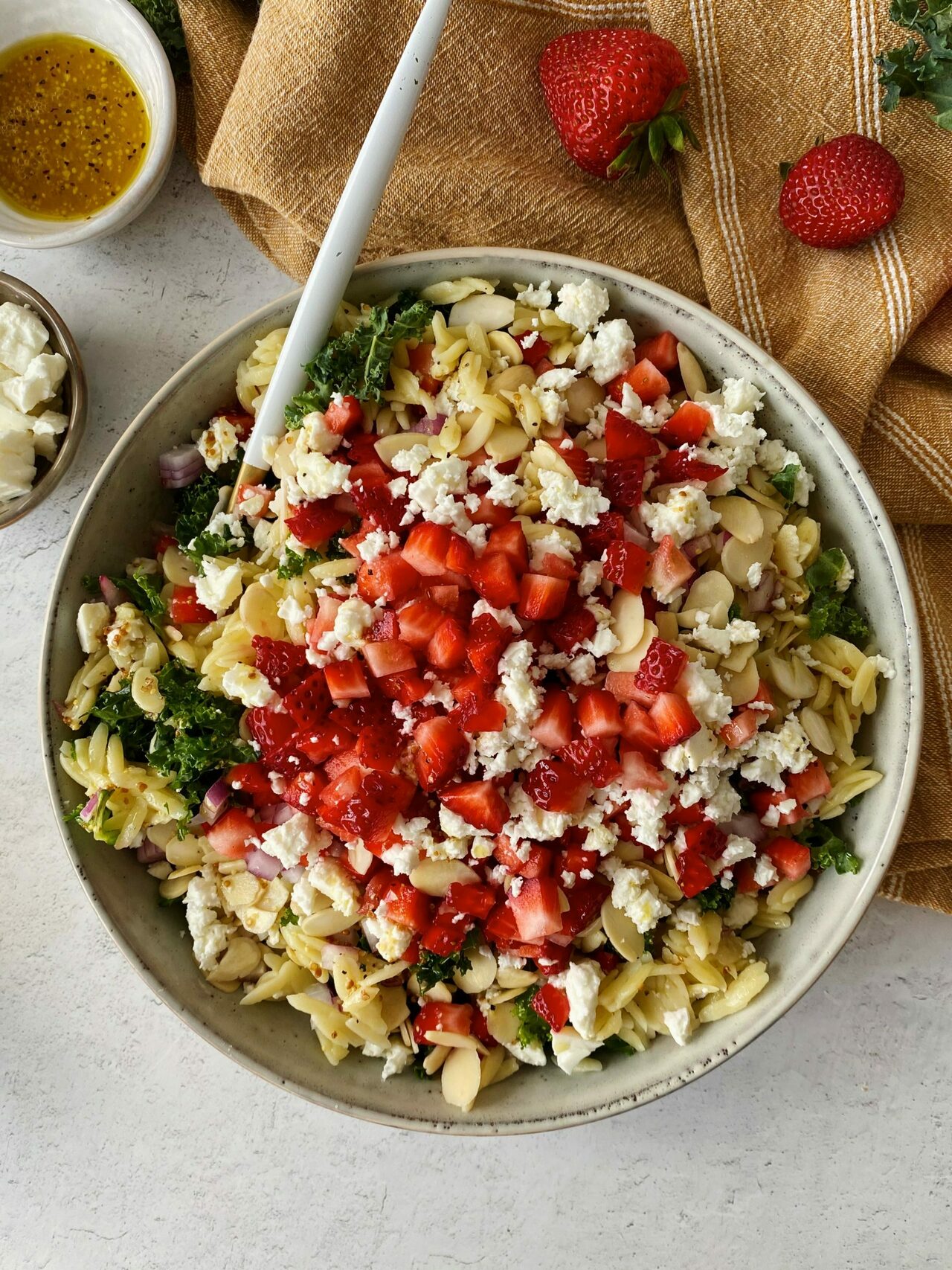
Summer Salad - it's getting hot hot hot so time for some scrummy and interesting salads
Ingredients:
1 bunch kale leaves
1 bunch rocket leaves
1 cucumber, sliced
2 cups strawberries, chopped
1 cup cooked orzo
Salt and pepper to taste
Crumbled feta cheese
Combine all ingredients in a large bowl, and toss well.
Dressing ingredients:
1 cup water
1 cup olive oil
1/3 cup fresh-squeezed lemon juice
Pinch of salt and pepper
fresh mint
pinch of sugar
Whisk, blend, or shake in a tightly sealed container all ingredients together until combined. Pour as desired over individual salad servings.
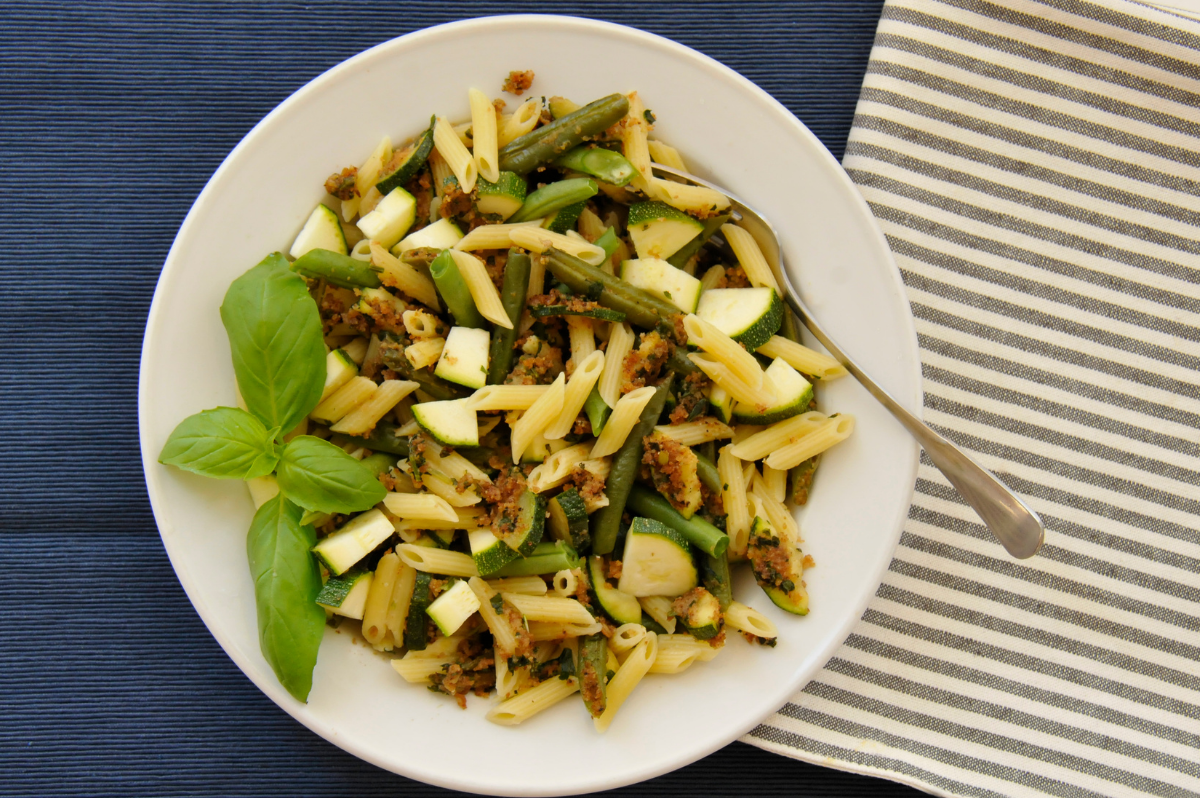
Summer pasta perfect for those days when you need something more heavy and grounding. Enjoy
INGREDIENTS
½ pound of dried pasta shapes, such as penne, small shells or orecchiette
¼ cup of olive oil or ghee
Pinch of hing (optional)
2 cups of French or green beans, trimmed and halved crosswise
3 cups of courgette or other summer squash, quartered lengthwise and sliced
Salt
2 tablespoons of olive oil
¾ cup of dry bread crumbs
¾ cup of finely-chopped fresh basil
½ cup of finely-chopped flat-leaf parsley
¼ cup of minced fresh mint
Black pepper
DIRECTIONS
Cook the pasta and Drain.
Heat the ghee or oil with the hing in a skillet over low heat. Add the French or green beans, cover, and sauté for 2 to 3 minutes.
Add the courgette/ summer squash, sprinkle with salt, cover, and cook until tender, stirring occasionally.
Heat the second amount of oil in a skillet. Add the hing and sauté for 30 seconds, until fragrant. Add the bread crumbs and sauté, stirring constantly, until golden brown and crisp.
Add the basil, parsley, mint, and a sprinkling of black pepper, and stir. Toss with the pasta and vegetables. Adjust the seasoning
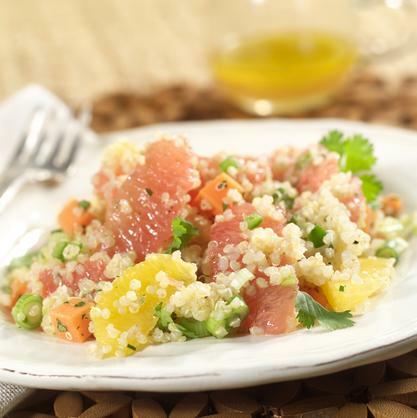
A perfect recipe for those warm days Due to the raw, cool nature of this it maybe best to avoid if you are have lots of vata symptoms but this is perfect for pitta and kapha
Grapefruit and Fennel salad
1 APPLE (RAW)
1 cup chopped FENNEL bulb
1 inch GINGER (FRESH)
1 cup GRAPEFRUIT
1/2 whole LEMON
1 cup fresh MINT
3 tbsp OLIVE OIL
1 cup QUINOA
2 cup WATER
1. Rinse quinoa to remove bitter coating.
2. Simmer in 2 cups water for 20 minutes, or until quinoa soft. Once done rinse with cold water.
3. Peel and cube grapefruit, chop mint, slice apple and fennel.
4. Add to a large salad bowl with quinoa and toss thoroughly.
5. Mix the juice and zest of lemon, ginger and olive oil to make a dressing.
6. Drizzle on top and before serving.
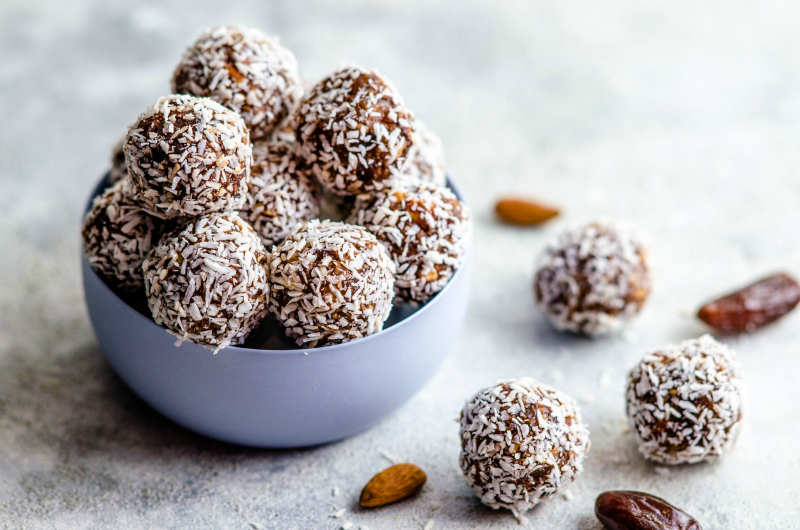
In need of a sweet snack?? I have something for you and it's perfect for pacifying pitta and vata (sorry not so great for kapha!)
Pitta coconut bites
Ingredients list:
Walnuts: ½ cup
Whole almonds: ½ cup
Almond butter: ½ cup
Pitted dates: 4
Maple syrup: ¼ cup
Vanilla extract: ½ tsp
Salt: ¼ tsp
Shredded unsweetened coconut: 2 cups
Raw carob powder (optional): ¼ cup
1. Place the walnuts in a food processor and process until coarsely ground. Add the dates, and pulse until well-combined with the nuts.
2. Add the raw carob powder (if using it), maple syrup, almond butter, vanilla, and salt. Process until the mixture is thick and smooth.
3. Add the almonds, and pulse a few times until well-combined; you want them to remain in crunchy chunks. Mold the mixture into golf-size balls and roll them in the shredded coconut. Keep the coconut energy bites in the fridge until they become firm. You can store them in an airtight container for longer shelf life.
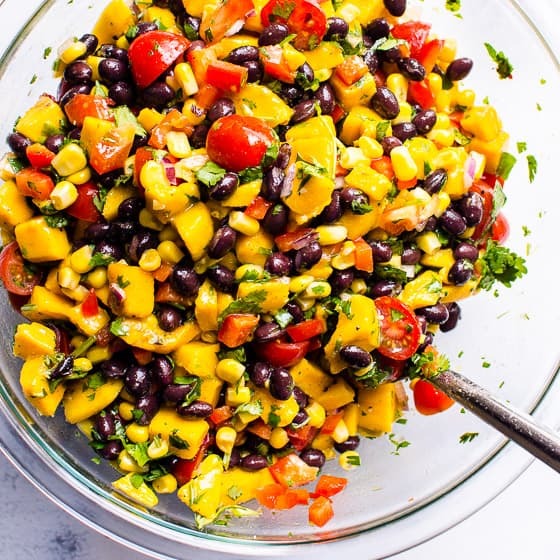
Avocado and mango salad
Ingredients:
2 avocados, peeled, pitted, and diced
3 mangoes, peeled, pitted, and diced
1 can black beans, rinsed and drained
1 can sweet corn, rinsed and drained
1 red onion, diced
2 tablespoons extra virgin olive oil
1½ limes, juiced
½ cup fresh coriander, chopped
½ teaspoon chili powder
Salt and pepper to taste
Combine all ingredients in a large bowl. Cover and chill for at least 30 minutes.
Enjoy
For Kapha reduce the Avocado and add a bit of extra chilli, for vatas make sure to add lots of oil and use can swap the beans for black or red lentils if they cause I little bit too much air in the system.
PS I couldn't find a photo for this so this photo isn't quite the same
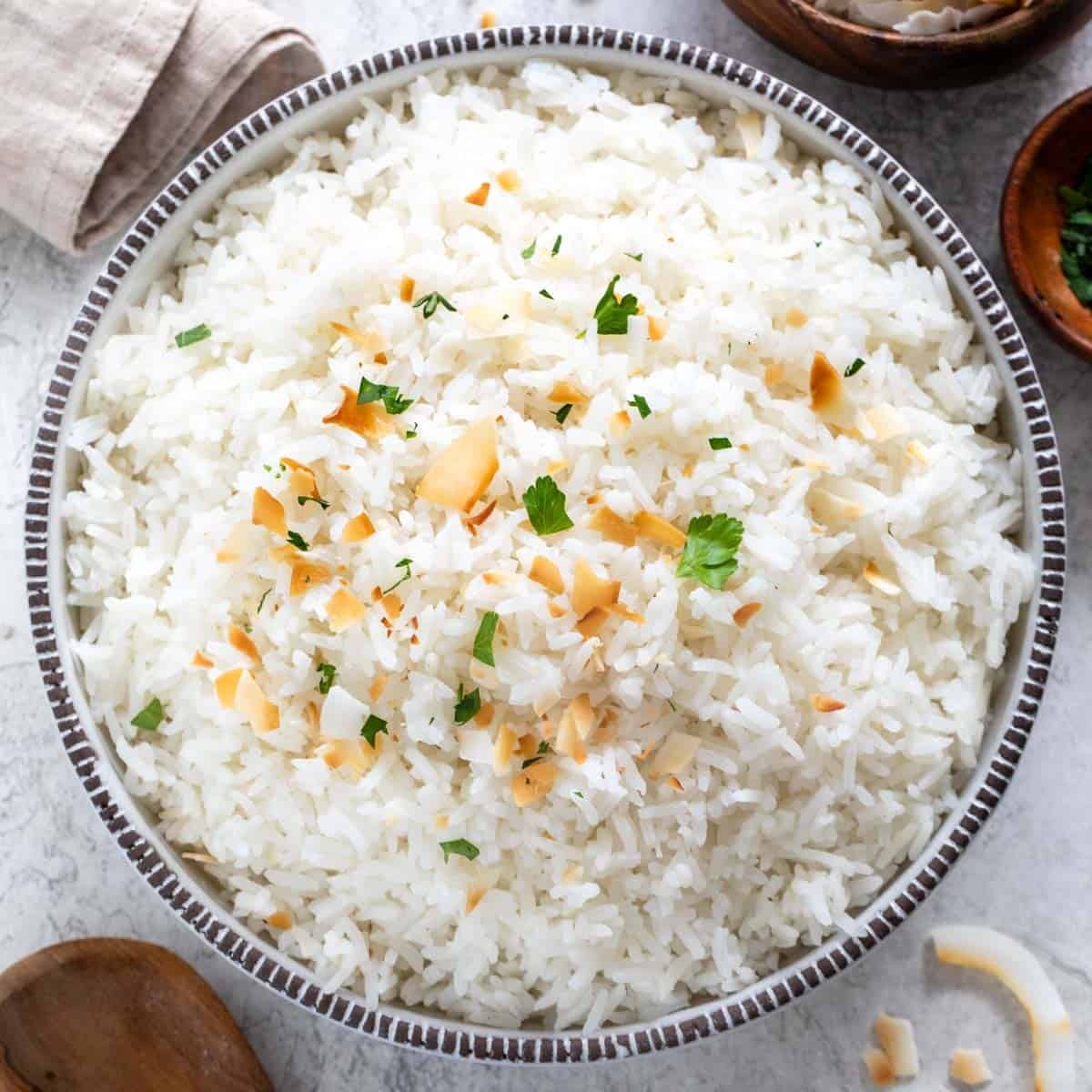
Coconut rice
So this is super easy to make and tastes delicious so a perfect side for Pitta season!
Coconut is cooling on the system so the pitta girls best friend.
If you have a lot of kapha you may need to have less and/or spice this up so add some grated ginger and chilli flakes. Or simply team it with something warming
Ingredients
1 cup Basmati rice
1/2 cup of coconut flakes
2 tbsps of coconut oil
1/2 tsp salt
3 cups water
1. Rinse the rice well. Bring water to a boil. Add rice, half of the coconut flakes, oil, and salt. Allow the water to return to a boil, turn lower heat to a simmer and cover.
2. Meanwhile, roast remaining coconut flakes until slightly browned. Garnish over rice when tender.
3. Serve with whatever you fancy...dahls, curries, stir fry
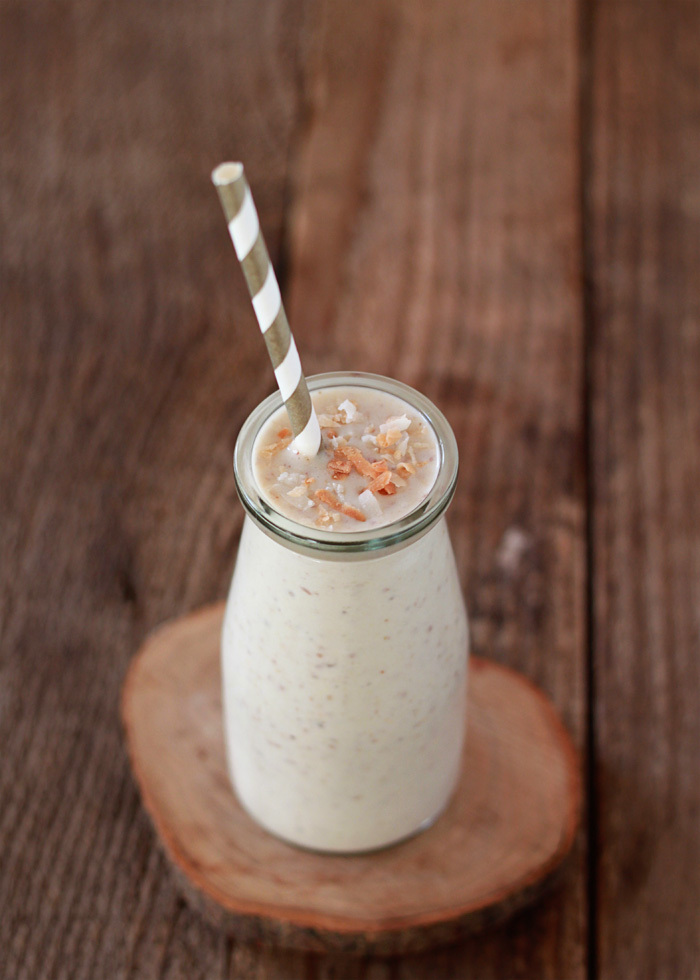
Vanilla, coconut and almond smoothie.....yummy and perfect breakfast for pitta season
2 tbsp ALMOND BUTTER
1/4 tsp ground CARDAMOM
2 cups COCONUT MILK
5 whole DATES (DRIED)
1 whole VANILLA BEAN
PREPARATION
1. Scrape seeds from vanilla pod and coarsely chop dates.
2. Add all ingredients to blender and process until smooth.
This may be a little heavy for those that have a lot of kapha, so swap the coconut milk for skimmed milk. This recipe is fine for vata types. Enjoy
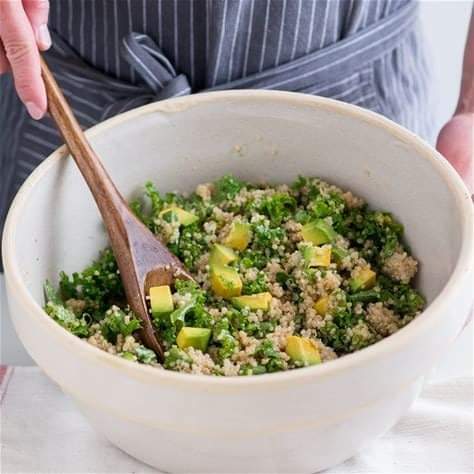
This weeks recipe is for all the avocado fans!
Bitter-Sweet Pitta Pacifying Salad
Ingredients:
1 cup red or white quinoa
2 cups water
1 large lemon
¼ teaspoon (tsp.) ground coriander
¼ tsp. ground cumin
¼ tsp. sweet paprika
2 medium firm-ripe avocado, peeled, and cut into half-inch chunks
Freshly ground black pepper
Salt to taste
How to prepare:
Rinse the quinoa well with cold water.
Cook the quinoa in a rice cooker with water till it becomes fluffy. Strain it and let it cool.
Cut and add the avocado to it, and squeeze the lemon on to it.
Add all the spices, and salt to taste.
Toss the salad and serve.
Serve with a selection of beets, celery, cucumber, lettuce, and pomegranates.
As the salad dressing a salad dressing you may choose to mix together coconut milk (thick), black pepper, fresh grated ginger, chopped basil, and salt - use plenty if vata imbalance and less for kapha.
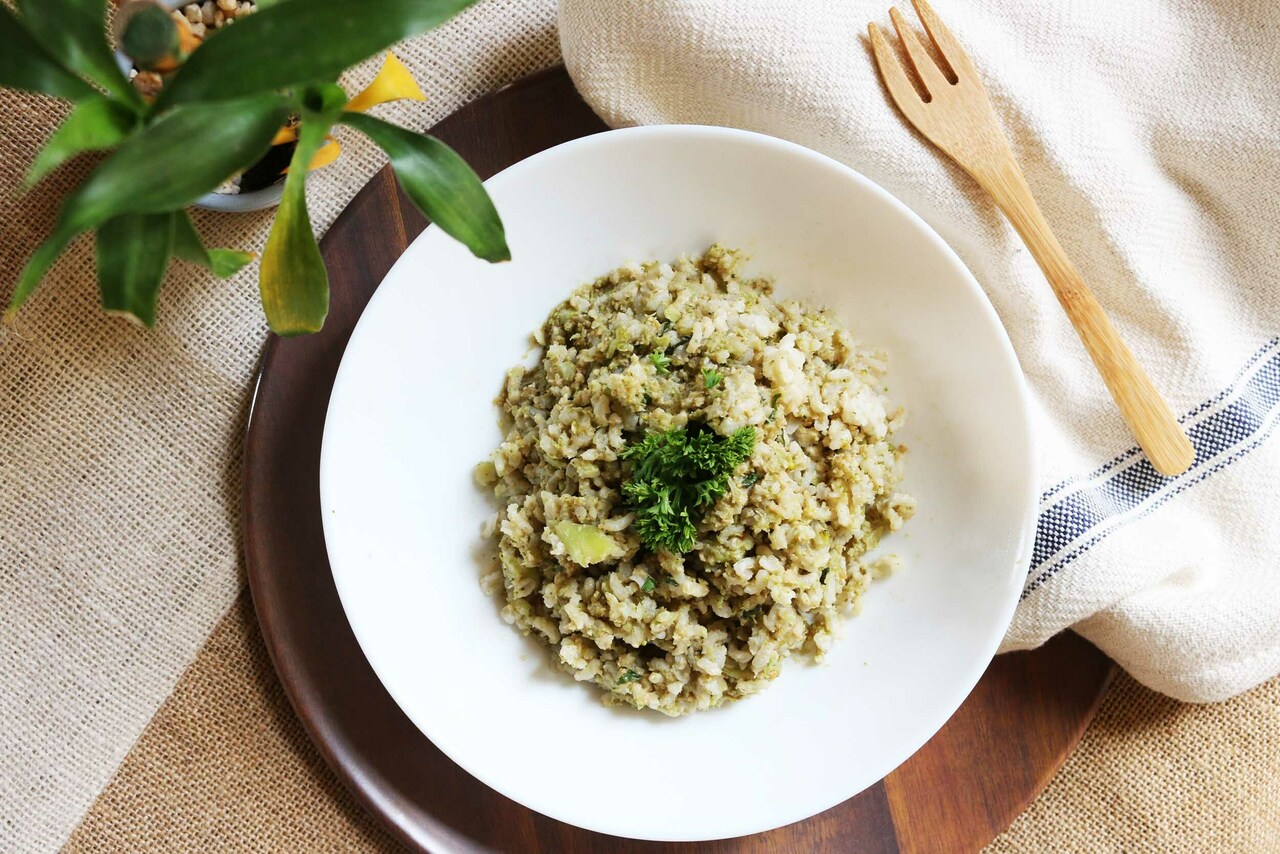
Pesto Brown Rice - I adore pesto and even though this is a lighter version- its still yummy. Enjoy
Ingredients
2 cups cooked Brown Rice
1/2 cup steamed Broccoli (cooked until just soft, should still be bright in color)
1/4 cup Unsalted, Roasted Sunflower Seeds
2 tbsp Lemon Juice
3 tbsp Oil (Olive oil for Vata, Sunflower Oil for Pitta)
12 Basil Leaves
1/8 tsp Salt
Instructions
In a small food processor, add in sunflower seeds, oil, lemon juice, and salt. Chop until sunflower seeds are crumbled well into a coarse mixture.Add in basil leaves and blitz until finely chopped.Add in broccoli and blitz until desired consistency.
Mix into warm fluffy brown rice and top with fresh parsley for Vata/Kapha types or fresh coriander for Pitta
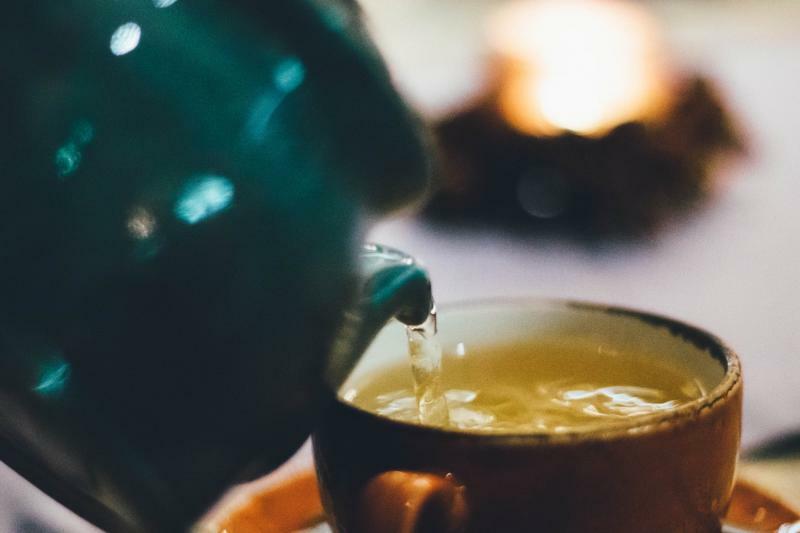
Pitta tea recipe - keep cool this forthcoming season with this beautiful herbal blend
Ingredients
1/4 teaspoon cumin seeds
1/4 teaspoon coriander
1/4 teaspoon fennel
1/4 teaspoon fresh parsley
1/4 teaspoon rose petals
1 cup boiling water
Preparation
- Mix the cumin seeds, coriander, fennel, parsley, and rose petals together.
- Add the boiling water.
- Steep for five minutes, covered.
- Strain and discard and herbs and spices and serve cool, lukewarm, or at room temperature
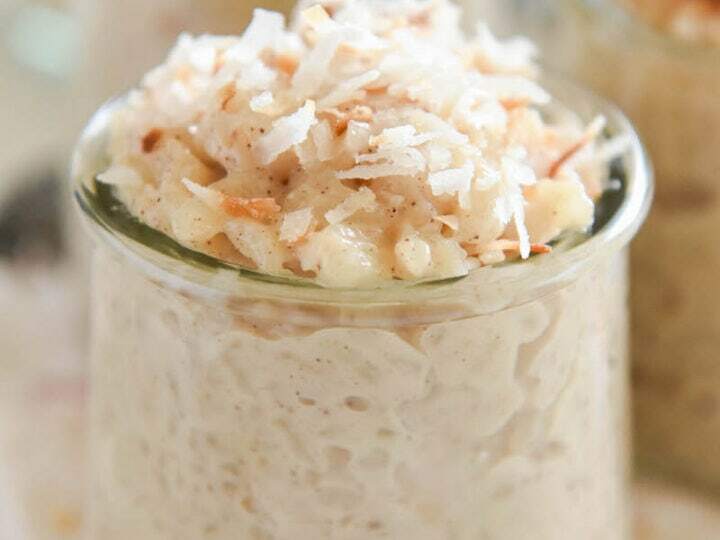
Coconut rice pudding
Ingredients
1/2 cup short brown rice
1/4 cup shredded coconut flakes
1/2 can of full fat, organic coconut milk
2 cups of water
1 tablespoon vanilla extract
1/2 tsp cinnamon
1/4 tsp cardamom
pinch of nutmeg
1 tablespoons of maple syrup
Optional add;
Stewed fruit
A splash of nut or oat milk
Sprinkle of coconut flakes
Extra dash of cinnamon
A dollop of ghee (especially for Vatas and Pittas)
Directions
1. In a slow cooker, combine rice, shredded coconut, coconut milk, water, cardamom, cinnamon, vanilla, and nutmeg
2. Place the crockpot on low. Cover and let slow cook for 1.5-2 hours or until liquid is absorbed.
3. Scoop into a bowl and serve with desired toppings!
Vata: Top with 2-3 chopped dates and add a small spoonful of ghee.
Kapha: Enjoy this dish in moderation and avoid it in the late afternoon / dinner, so your body has time to digest it before sleep.
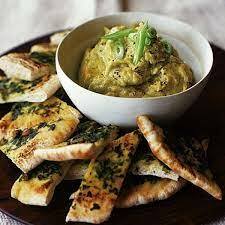
How good does this look!! Enjoy pitta season lovelies
avocado hummus and coriander pitta
1 ripe avocado
410g can chickpeas, rinsed and drained
2 garlic cloves, roughly chopped
1 tsp ground cumin
Juice of ½ large lemon
2 tbsp tahini (sesame seed paste, from major supermarkets)
2 tbsp olive oil, plus extra for drizzling
Few spring onions, sliced, to garnish (optional)
For the coriander pittas:
50g butter
1½ tsp coriander seeds, roughly crushed
Handful of fresh coriander, leaves roughly torn
6 white pittas
Make the avocado houmous. Halve and stone the avocado, scoop out the flesh and put it into a food processor. Add the chickpeas, garlic, ground cumin, lemon juice, tahini and olive oil and pulse until nearly smooth. Transfer to a bowl and season to taste. Drizzle with a little oil, and top with spring onion, if using.
Make the pittas. Preheat the grill to medium. Melt the butter in a small pan over a medium heat. Remove from the heat and stir in the coriander seeds and leaves. Brush over 1 side of each pitta, pop 3 on a baking sheet, butter side up, and grill for 1-2 minutes until golden. Set aside while you grill the rest. Cool slightly, then slice each pitta. Serve with the houmous.
Herbs for Pitta Season
*Always check with your doctor for potential effects on prescribed medications before taking herbal medicines and supplements
Brahmi is well known for reducing the stress hormone cortisol so perfect for Pitta season and for counteracting the effects of stress by regulating the hormones involved with the stress response. It can also decrease anxiety by improving the production of serotonin - the hormone that calms the mind.
This is an important ayurvedic herb that has been used for centuries as a "nervine" - a herb that calms the nervous system.
Brahmi is a potent antioxidant that has a powerfully protective effect on cells, with significant super-oxide radical scavenging activity. This herb has also been shown to enhance antioxidant activity in organs such as the kidneys. There is one particularly dangerous toxin that Brahmi is highly effective against - acrylamide - which is connected to various neurodegenerative diseases.
The antioxidant compounds found in Brahmi can help to strengthen the immune system by speeding up its response time to pathogens, viruses or bacterial infections.
Suggested Dosage Organic Brahmi Powder-2 - 6 grams/day Mixed with milk or juice
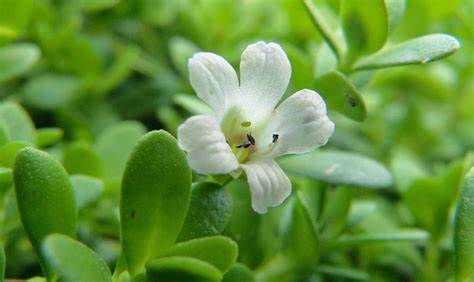
As we enter into the heat of pitta season, there are so many cooling herbs to keep you cool mentally, emotionally and physically
One of the easiest herbs in grow and yet holds so much medicine is the simple but magical mint!
Not only wonderful for heated and acidic digestion but it will also keep your emotions cool....perfect for those of you with lots of natural fire.
Mint varieties are wonderful for cooling the fiery nature of the Pitta dosha. If you’re feeling overheated, consider sipping on a fresh mint tea.
2 sprigs of fresh mint
1 cup of water
Pour boiled water atop the mint leaves. Let steep for 5 minutes, then strain and allow it to cool.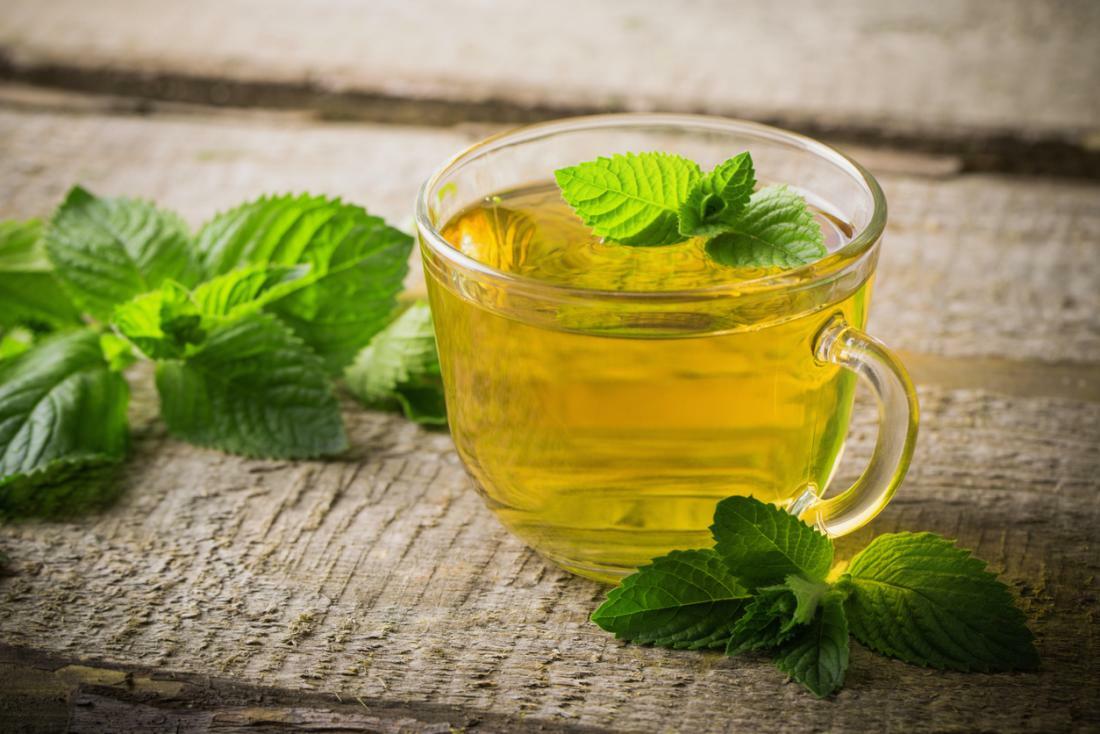
Boswellia is an extract sourced from the gum resin produced by the Boswellia serrata, a branching tree native to Africa and Arabia. Also known as "Indian Frankincense". In herbal medicine, Boswellia is sometimes taken by mouth or applied to the skin to manage the following conditions.
Asthma, Collagenous arthritis, Crohn's disease, Menstrual cramps, Osteo and Rheumatoid arthritis, Ulcerative colitis.
Some studies suggest that Boswellia may have some anti-inflammatory and anti-tumor effects, but large-scale, industry-independent clinical trials have not taken place.
Possible Side Effects
Boswellia is likely safe when taken by mouth for up to six months. Boswellia is possibly safe when applied to the skin for up to five weeks.
Boswellia has been known to cause nausea, diarrhea, bloating, acid reflux, heartburn, and allergic reactions.
It may stimulate blood flow in the uterus. Pregnant and nursing women shouldn't take Boswellia.
Boswellia may interact with medications, such as non-steroidal anti-inflammatory (NSAID) drugs like ibuprofen and drugs that are substrates of P-Glycoprotein (P-Gp), so be sure to consult your healthcare provider before using it. If you have gastritis or gastroesophageal reflux disease (GERD), you may not be able to take Boswellia.
If you're taking any type of blood thinner or have a condition that affects blood clotting, be sure to consult your doctor before taking Boswellia. It shouldn't be taken within two weeks of scheduled surgery.
Dosage and Preparation
Available in many health food stores, Boswellia is sold in supplement form and in formulas containing curcumin (turmeric) and other herbs.
Although Boswellia shows promise for certain conditions, further research is still needed from large-scale clinical trials to confirm these effects. If you're still thinking of trying Boswellia, speak with your doctor first to see if it's appropriate (and safe) for you and whether it can become a part of your treatment plan, possibly in combination with other herbs with anti-inflammatory properties, like ginger and Turmeric. 